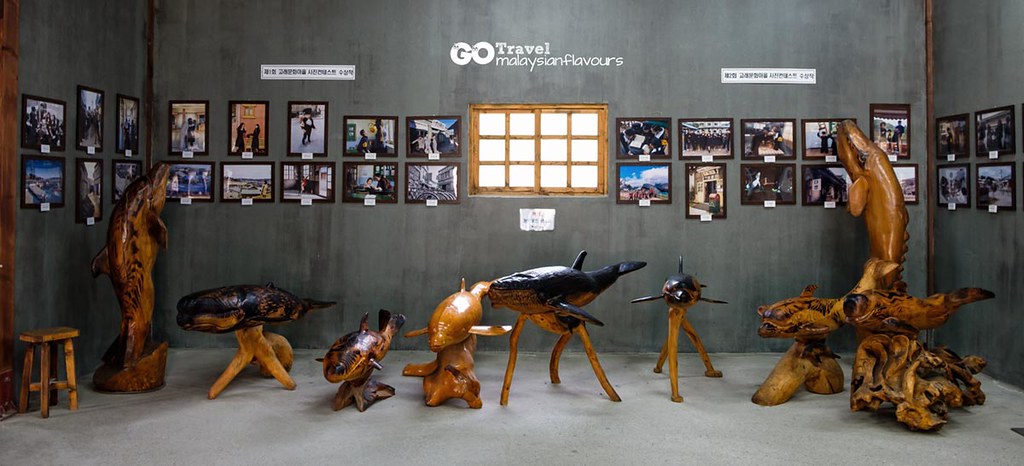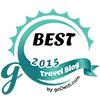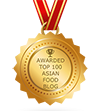Next morning, we moved to Jangsaengpo located in Nam-gu district of Ulsan, a port that is once well-known for its whaling activities.
PREVIOUS POST: Day 1 in Ulsan – Bamboo Forest like Arashiyama Japan, Ulsan Keunaegi Story Road, Taehwagang Eco-Tourism Park, and more!
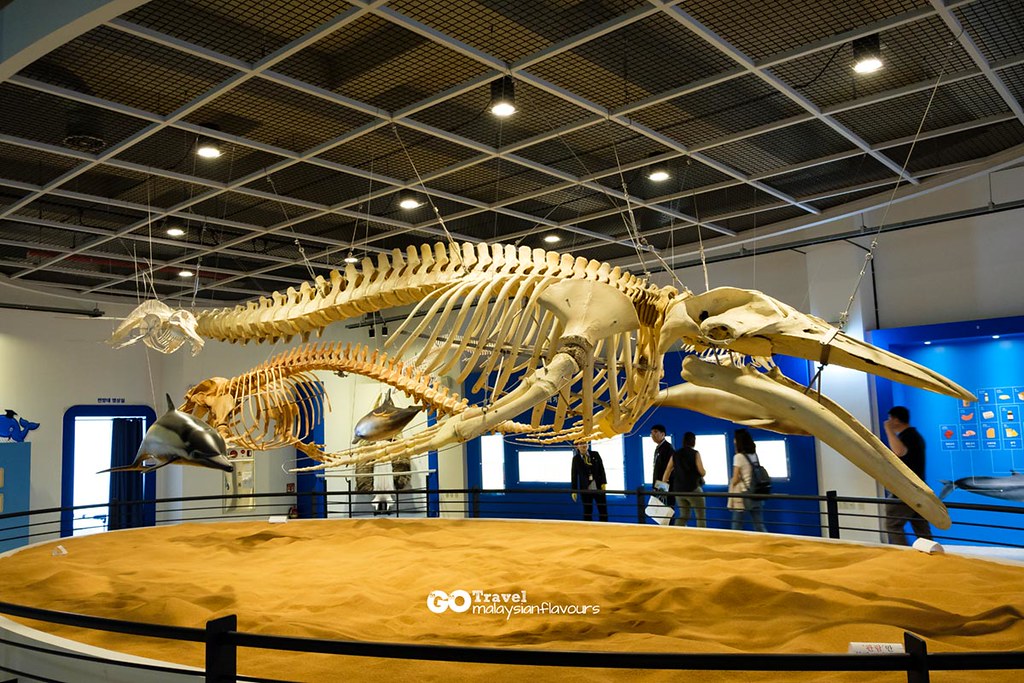
In Nam-gu Ulsan, other than Sinhwa Village that turns popular due to the filming location of Korean movie “Bicycle Looking for a Whale” with beautiful murals; Jangsaengpo Whale Museum & Whale Life Experience Museum and Whale Culture Village are tourist attractions to visit.
18. Jangsaengpo Whale Museum & Whale Life Experience Museum
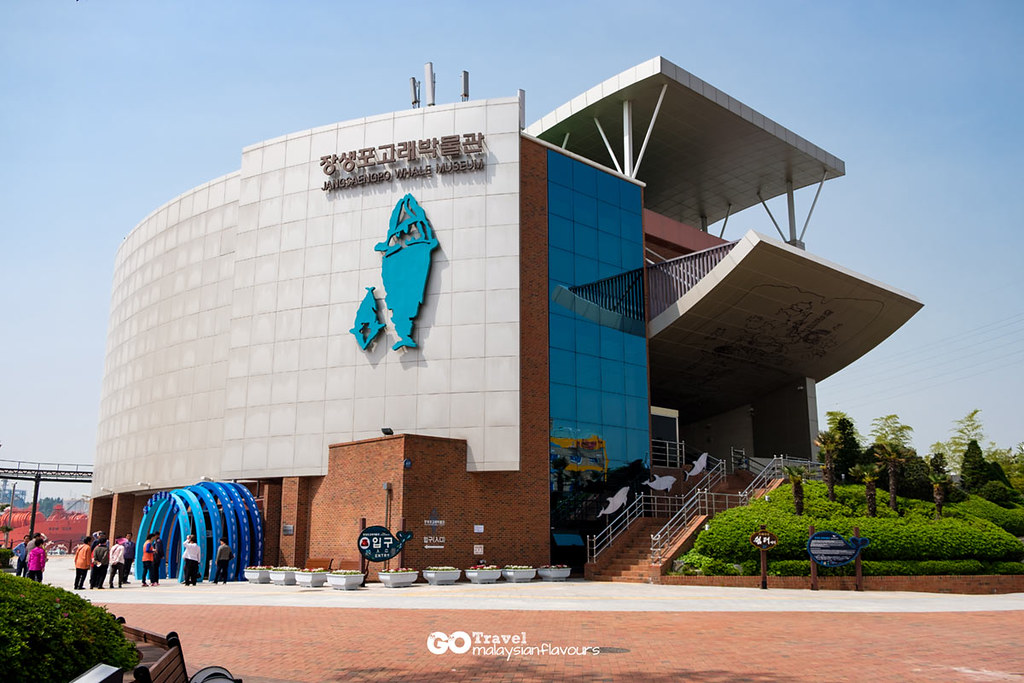
If you wonder how Ulsan is closely related to whaling, what are the history that showcases whaling in Korea, how whaling is done in the past, why is there no more whaling in Korea nowadays, Jangsaengpo Whale Life Experience Museum 장생포 고래생태체험관 is the place you should go to.

Jangsaengpo Whale Museum is the first and the only whale museum in Korea.

It displays more than 200 artifacts from whalers and whaling industry, along with learning of whale’ species and explanation about whale culture in Korea.
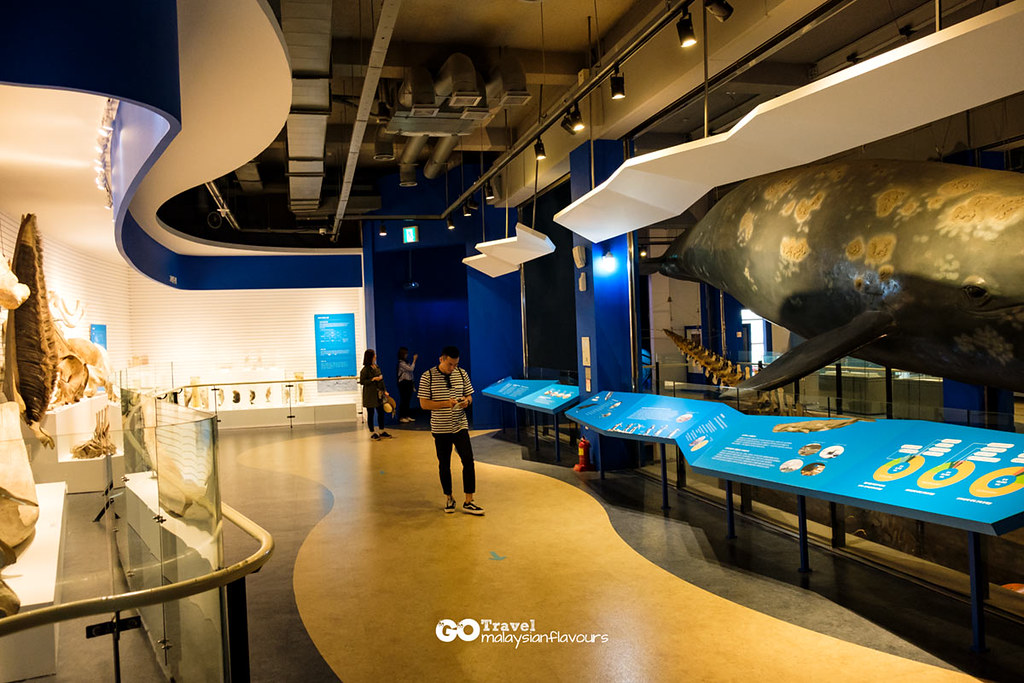
We started by getting to know deeper about the history of whale hunting by walking through the Whaling History Gallery.
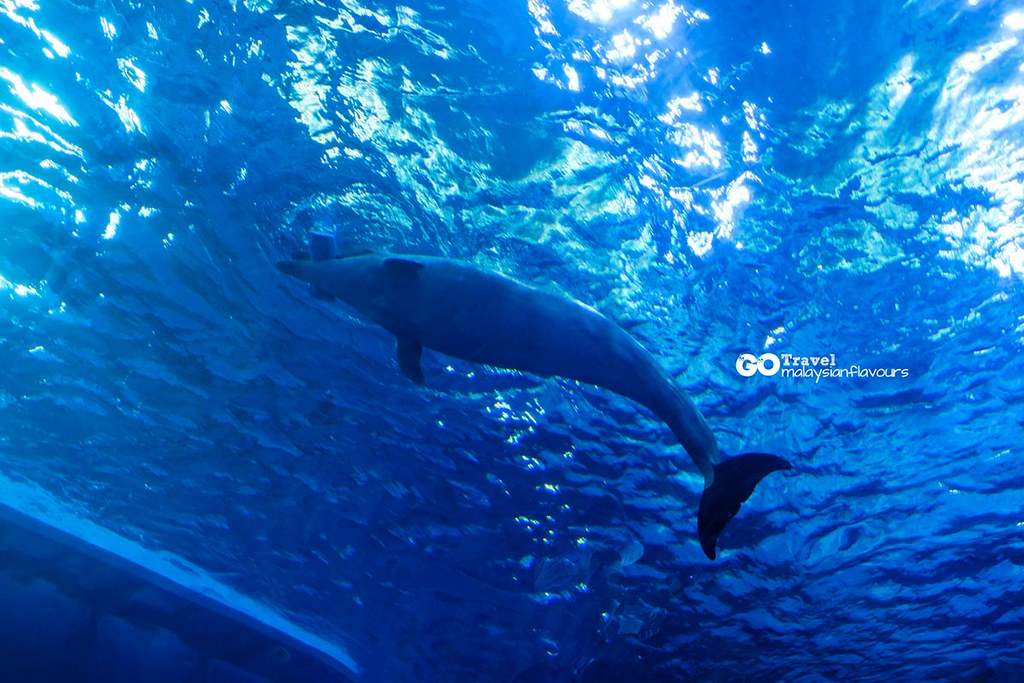
Whaling in Korea started thousands years ago….
Whaling activities in Korea could be dated back to as early as Neolithic Period, which is about 3,500 to 7,000 years ago. This is proven by Petroglyphs of Bangudae Terrace – a relic that reflect the pre-historic hunting and fishing culture in this country.
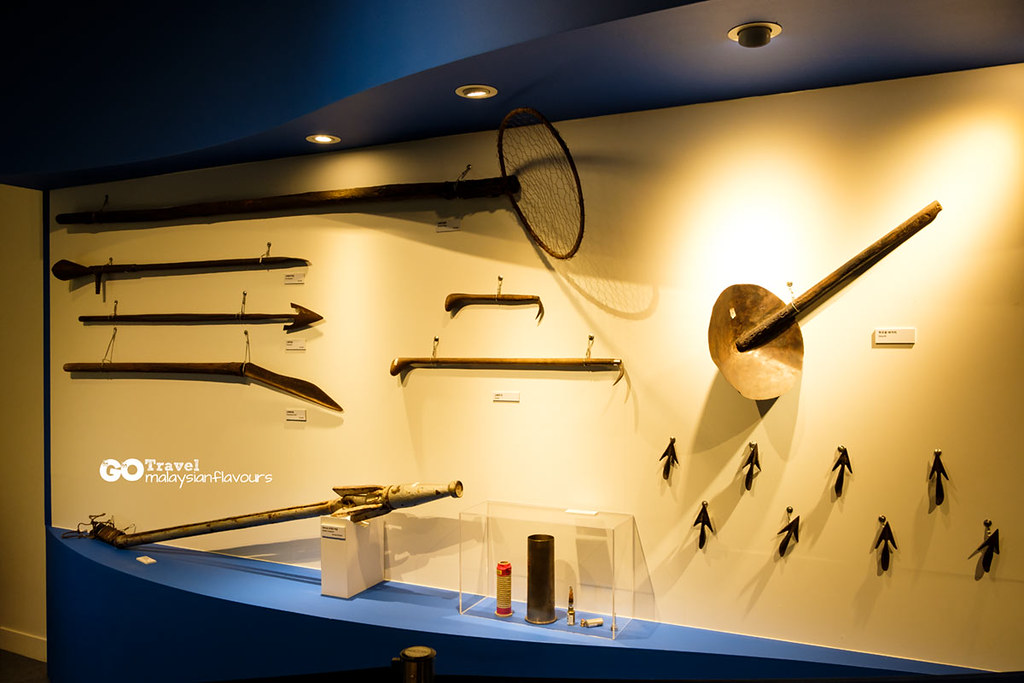
There are about 300 engravings showing over 20 types of sea and land animals along with hunting tools, fishermen, harpoons, boats on Bangudae petroglyphs Korea. Whales is one of the animals shown on the relic. In fact, almost one third of the identifiable figures are whales.
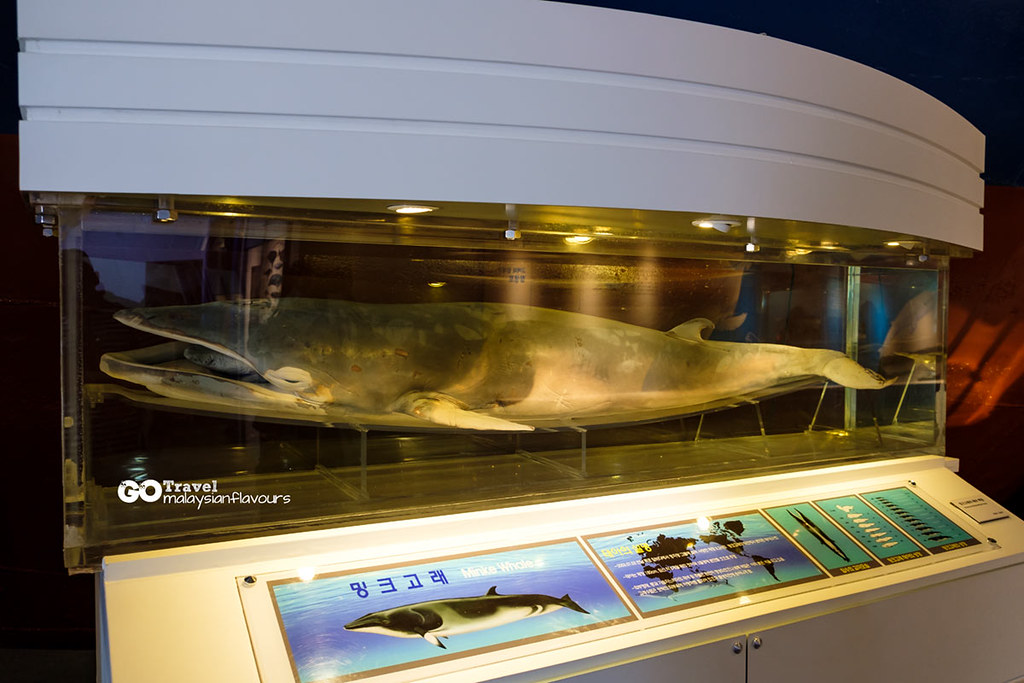
Ulsan is famous for whaling in the mid- to end- of 19th century…
And for the past decades of about 40 years, Koreans had been actively involved in whaling industry.
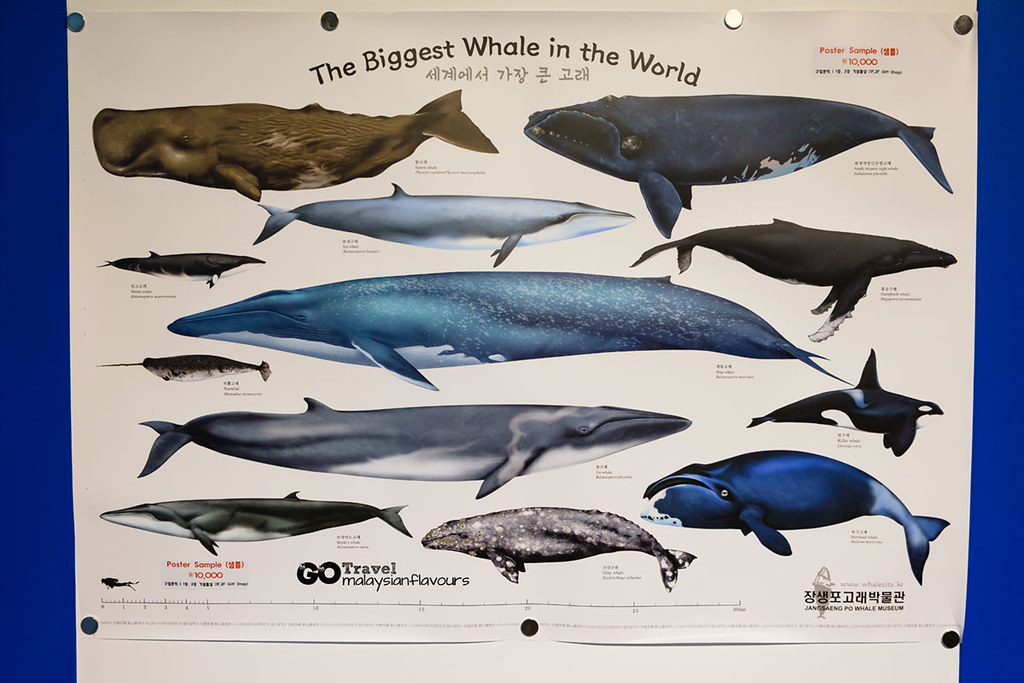
Gray whale, fin whale, blue whale, minke whale, humpback whale, minke whale, etc.,
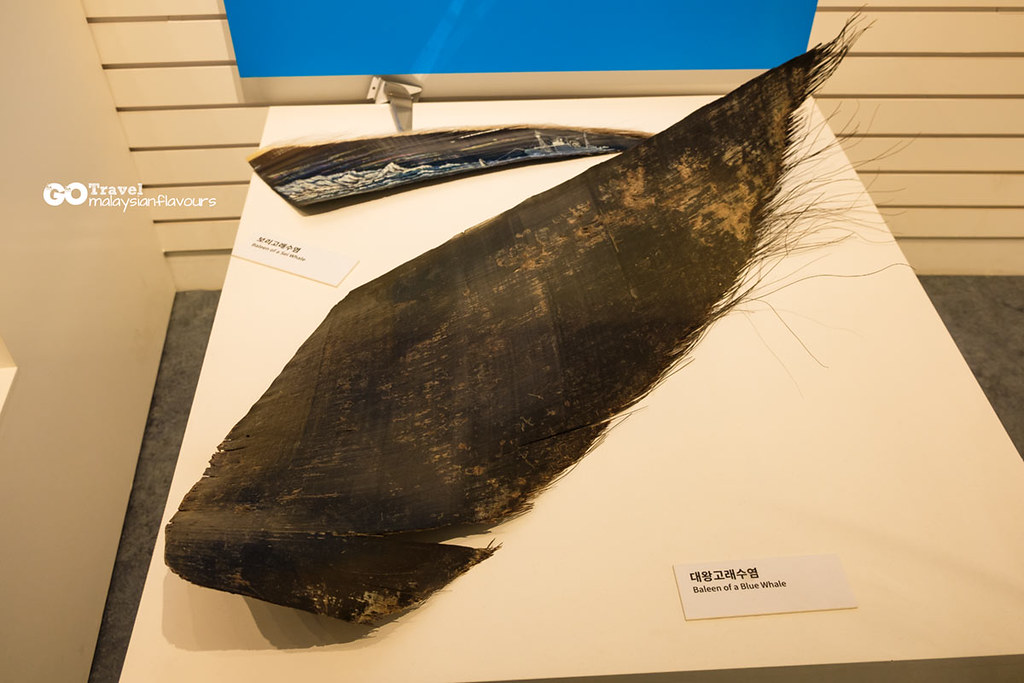
Jangseongpo Ulsan serves as an important port for this activities..
Jangseongpo, which lies adjacent to Ulsan Bay, is an important village in Ulsan for whaling.
The village was clearly, prospered as the processed and trading centres of whale. At their peak period, there are more than 20 whaling ships and almost 15,000 people resided in this area.
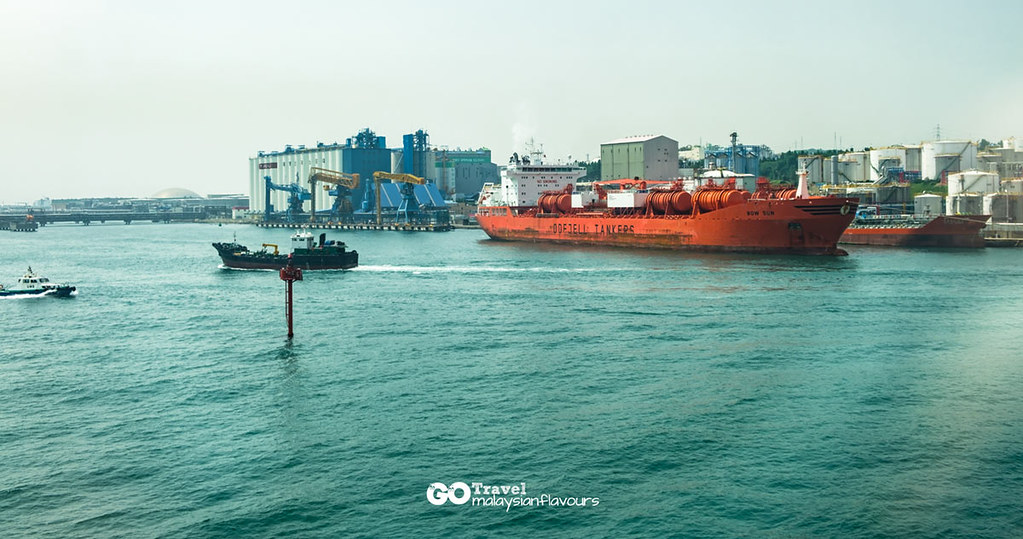
The small port is equipped with whaling-related facilities and business, like shipyard, whale processing factories, butchery stations, ironworks and not to forget, whale meat restaurants.
They hunt, process, sell, export and eat whales.
Whaling becomes a profitable business.
Jangseongpo turned famous, and whaling is an identity of this village. Just Ulsan alone, consisted more than 50% of the total of whale meat restaurants in South Korea.
Till one day, it was found that hunting of whales went a bit too much…
Sadly, during 1980s, the amount of whales are found becoming far lesser than normal, in danger to extinction. To protect these mammals, in 1986, (IWC) International Whaling Commission (IWC) has prohibited commercial whaling to continue in Korea.
No more commercial whaling is allowed, except whale caught-by-accident-in-net..
Whaling is now an illegal activities in Korea. Strong laws have been imposed to avoid commercial whaling. However, whale caught accidentally in the fishing net is by far, acceptable.
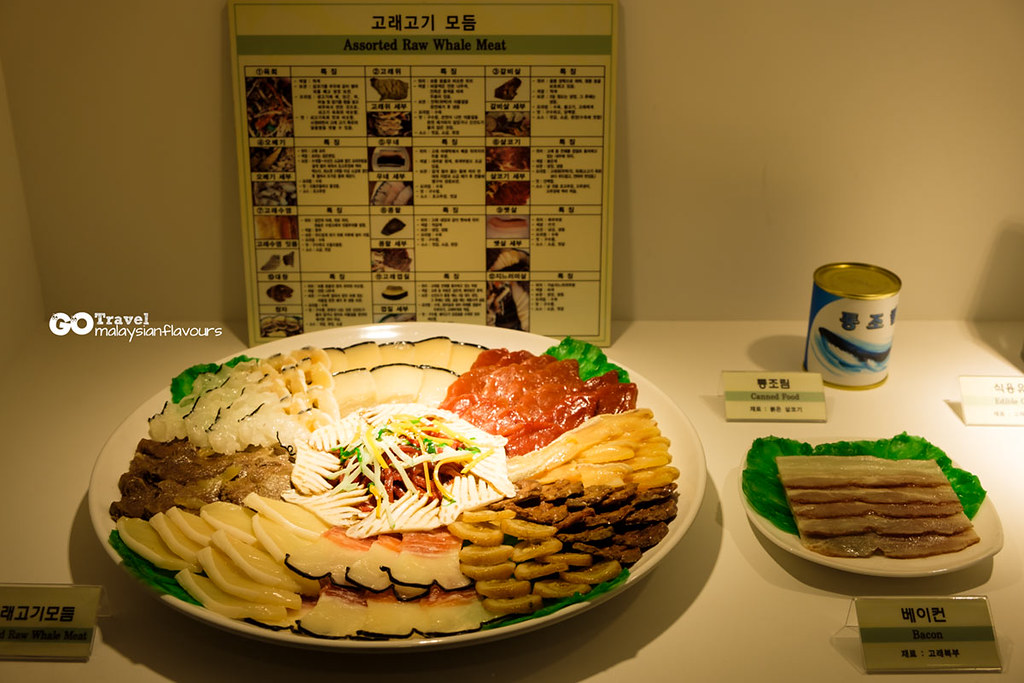
Eating whale meat is still the identity of Jangsaengpo, as people here are the persons who have the easiest access to freshest, high quality whale meat those days.
Jangseongpo Whale Museum is opened for whale culture learning…..
In 2008, Jangsaengpo is designated as Special Whale Culture Zone.
Jangsaengpo Whale Museum, Jangsaengpo Whale Culture Village, Whale Scupture Park, Whale Saure, Whale Story Trail and more whale-related centres are built.
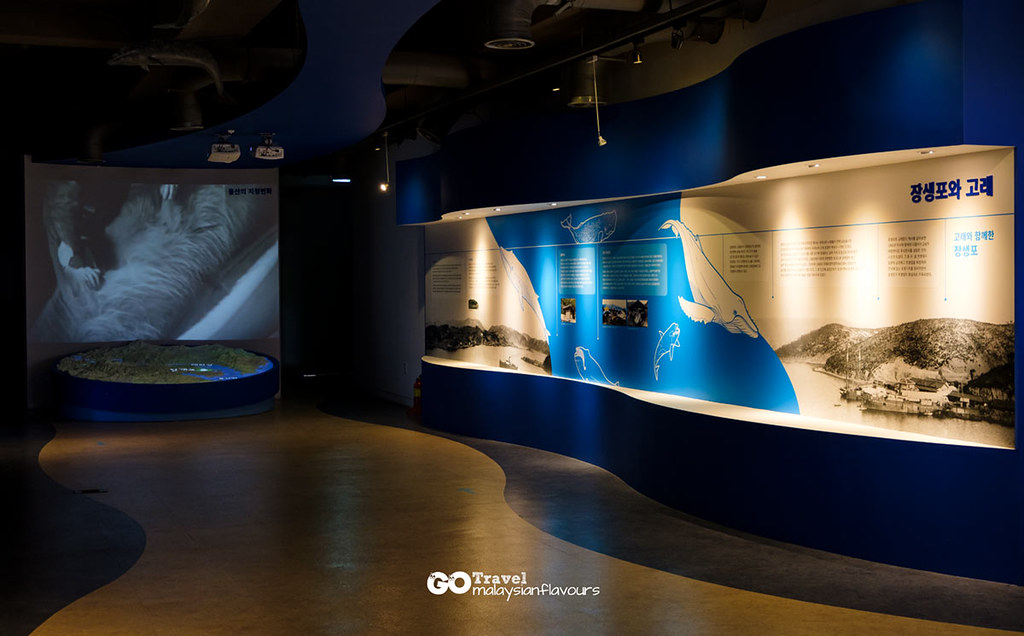
Here, you can listen to the story of whale..
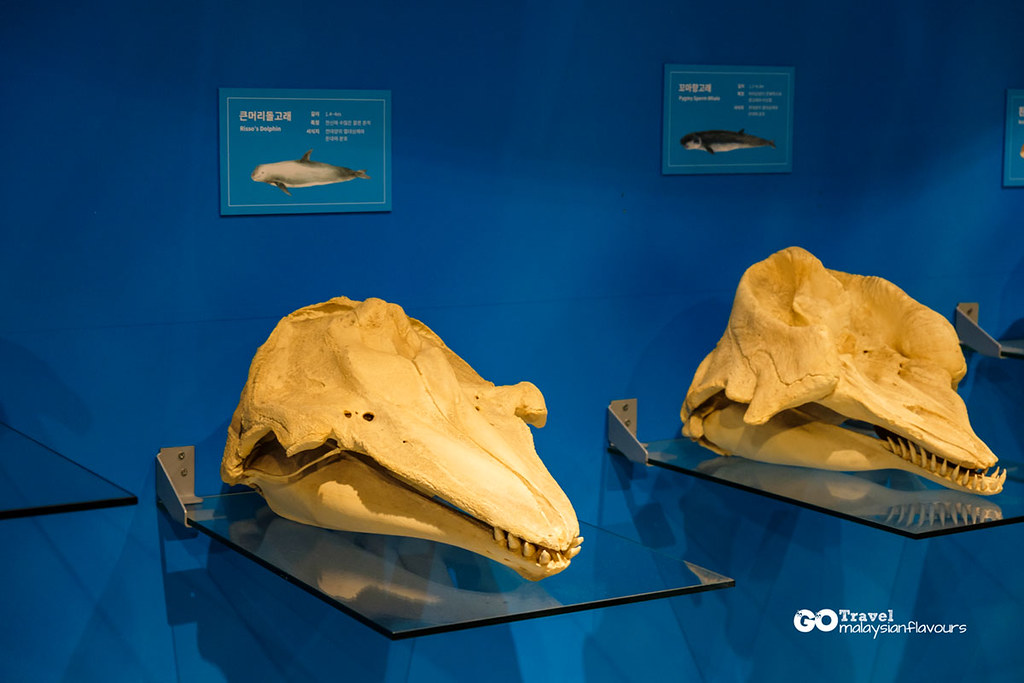
…see the whale’s skull of toothed whale which belongs to small-sized whales.
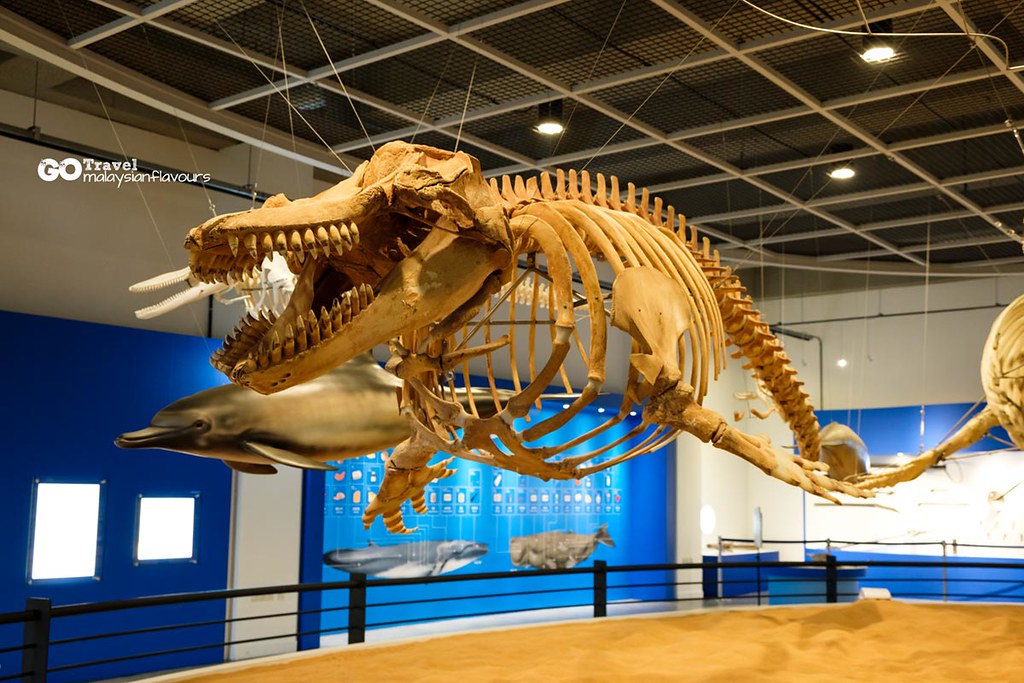
There are relics of actual size whale’s frames and video clips in Whaling History floor.
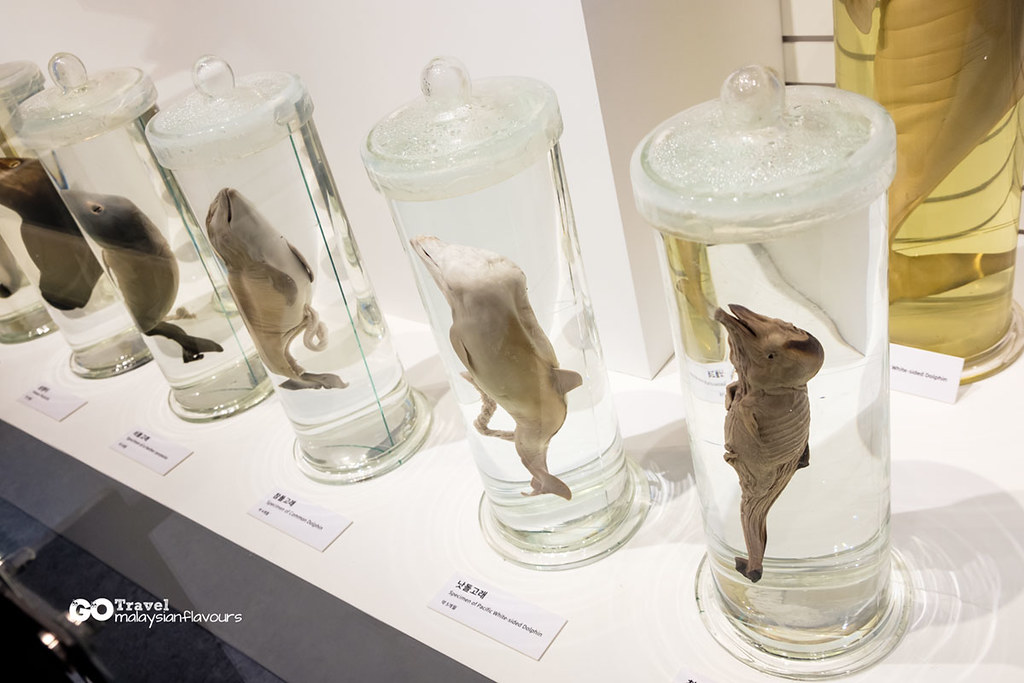
Gray Whale Zone
At 3rd Floor, allowed us to gain knowledge about reproduction, growth, migration route, recent research of Korean and California’s gray whale.
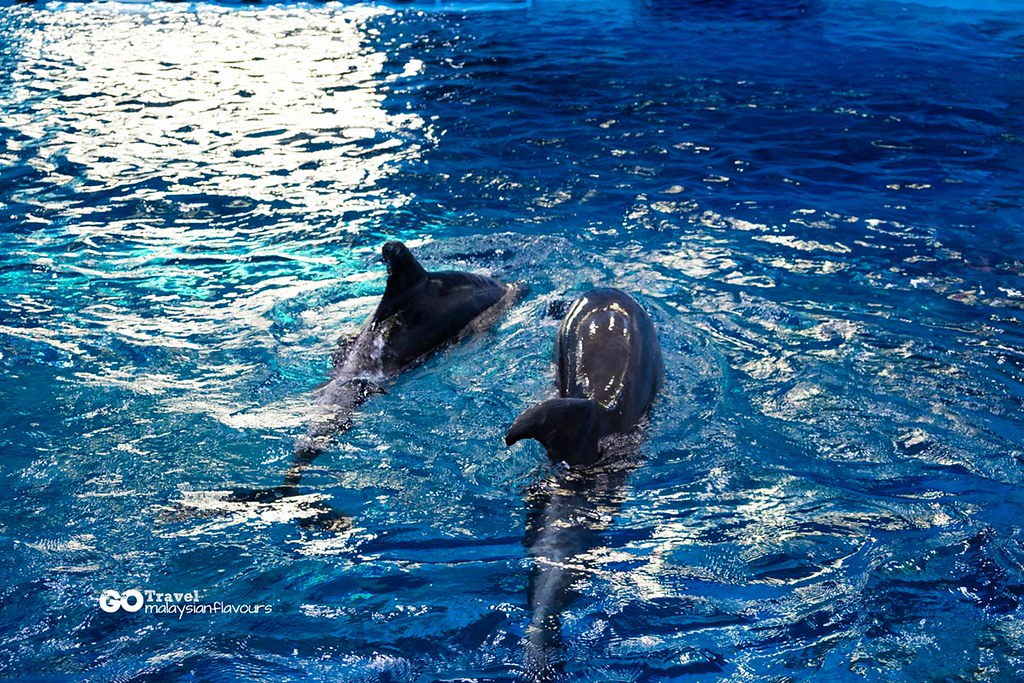
Dolphin Aquarium
Dolphin Aquarium here is largest in Korea! Live Bottlenose Dophin family live in here.
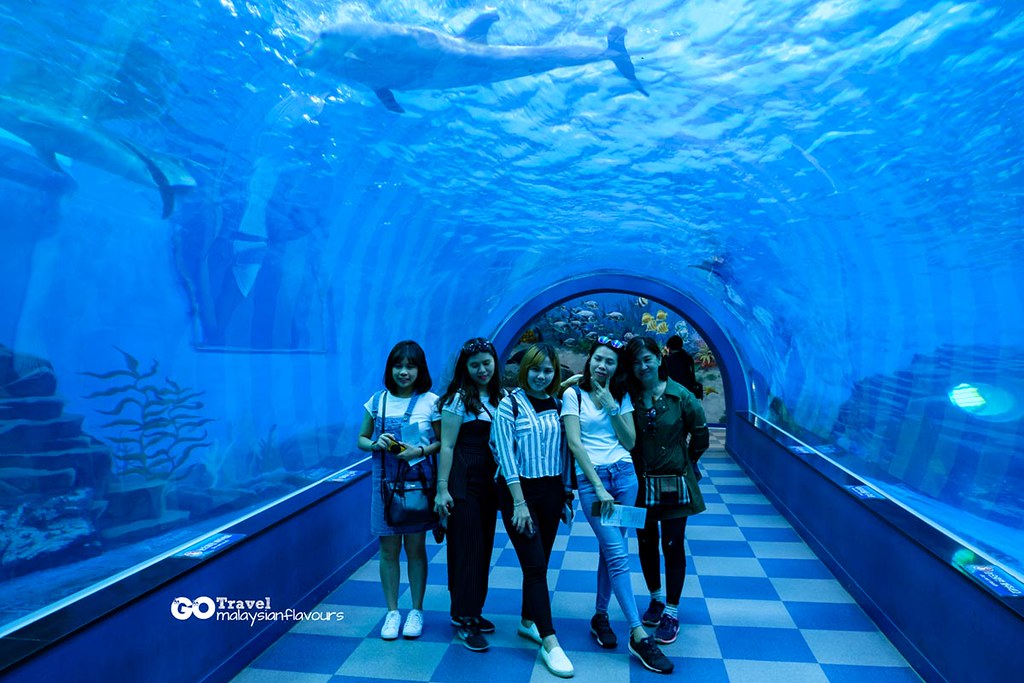
Undersea Tunnel
1m in length, 2.6m height, this is the aquarium where you can have a glimpse of lively swimming whales.
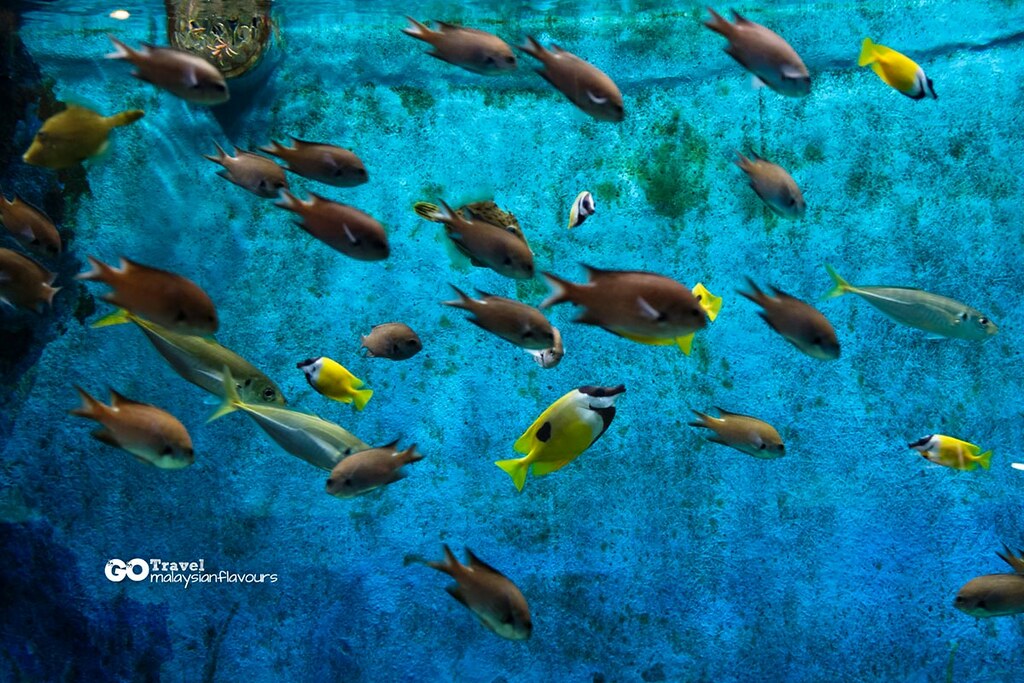
Fish Aquarium
Learn beyond just whales. About 70 species of fish in the large size aquarium.
19. Experience Zoo
More about animals at Experience Zoo, 3rd Floor. Parrots, rabbits, guinea pig – oh so cute! You can feed them with permission (charged service), or have a picture with them.
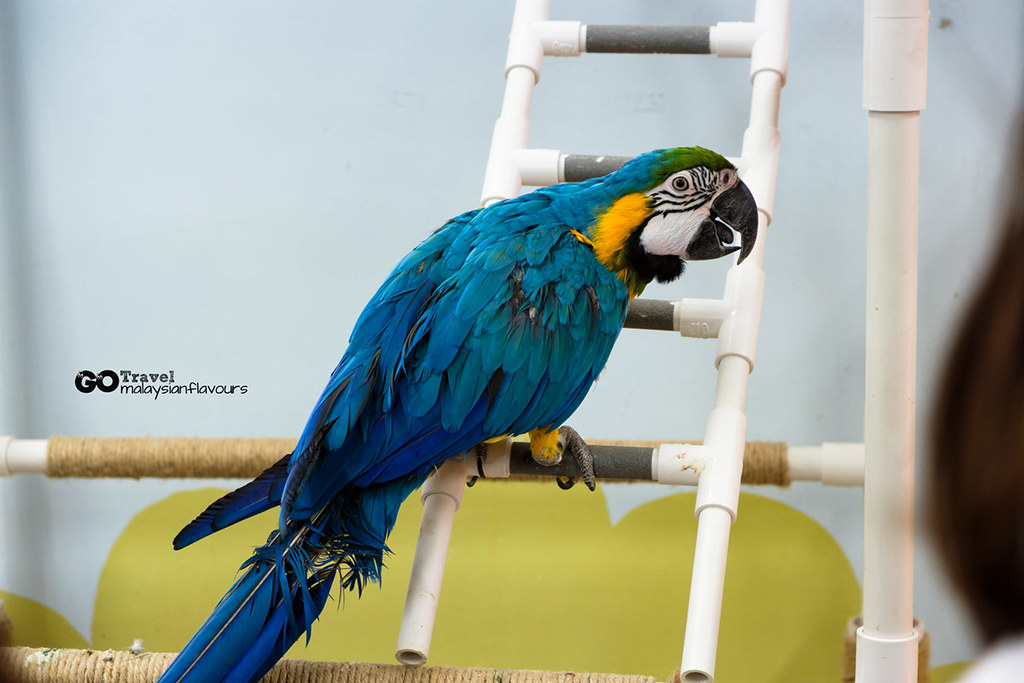
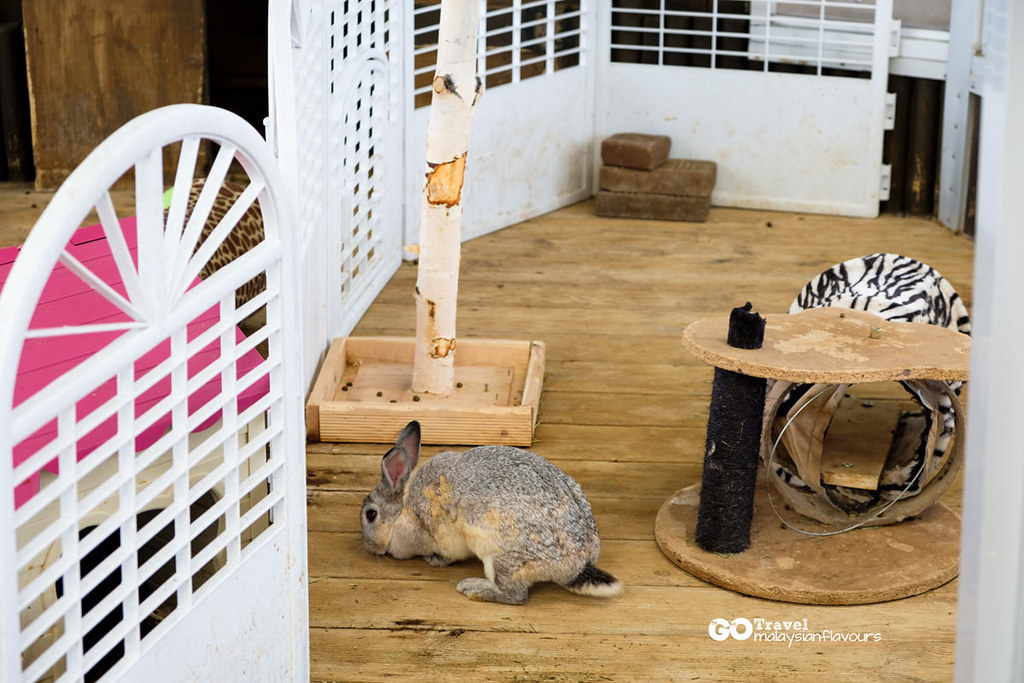
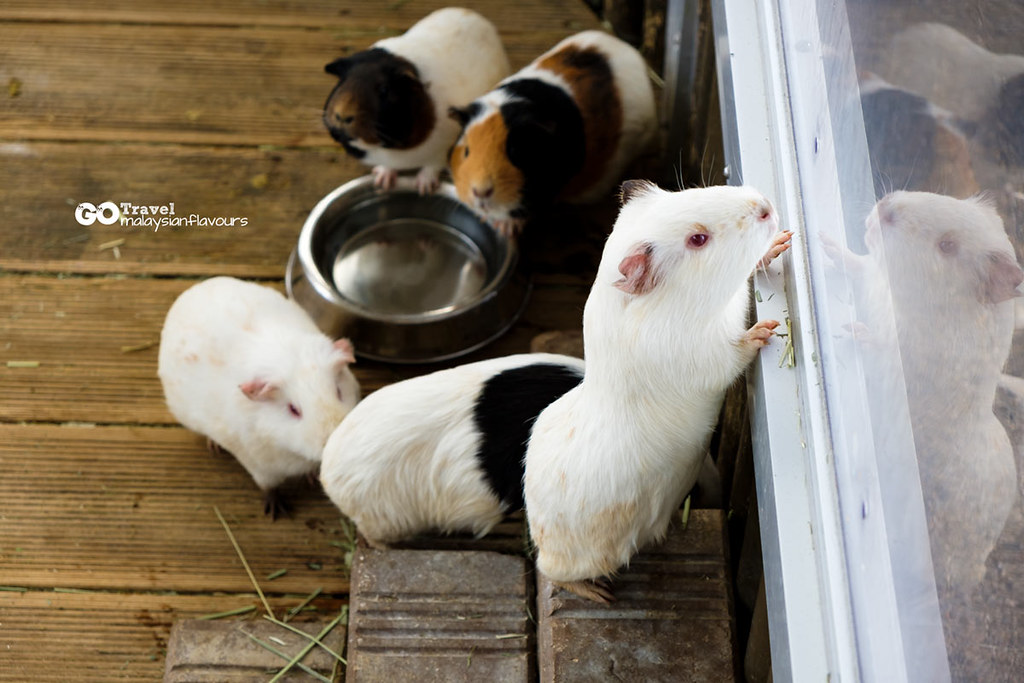
Address:
Jangsaengpo Whale Life Experience Museum
248, Jangsaengpogorae-ro, Nam-gu, Ulsan
Operating Hours: 9.30AM – 6PM
Ticketing Time: 9.30AM -5.30PM
Admission / Ticket Price:
Adults (ages 19-64) – Individuals 5,000 won / Groups 4,000 won
Teenagers (ages 13-18) – Individuals 4,000 won / Groups 3,000 won
Children (ages 3-12) – Individuals 3,000 won / Groups 2,000 won
4D Media Center – Individuals 2,000 won / Groups 1,600 won
How to reach: Ulsan Cyclic City Tour Loop Course – Daewangam Course, get off at Stop4, Whale Muesum/Whale Life Experience Museum
20. Jangsaeogpo Whale Culture Village
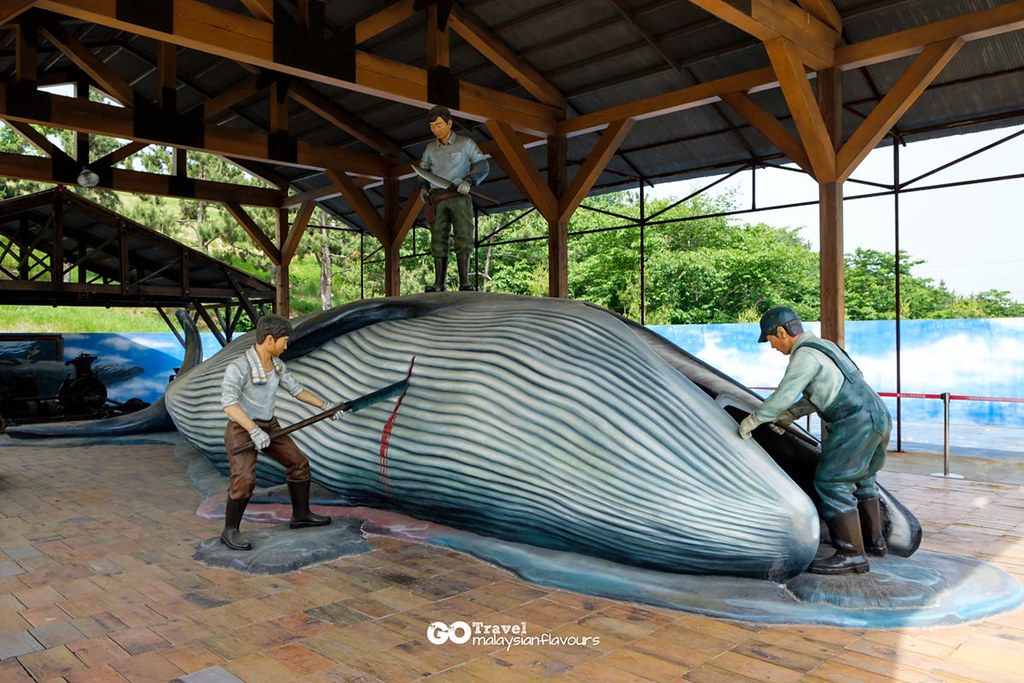
Similar to Jangsaengpo Whale Museum, Jangsaengpo Whale Culture Village 장생포 고래문화마을 is a place to experience the good-old-days of whaling in this town by re-creating some of the whaling scenes through sculptures and murals.
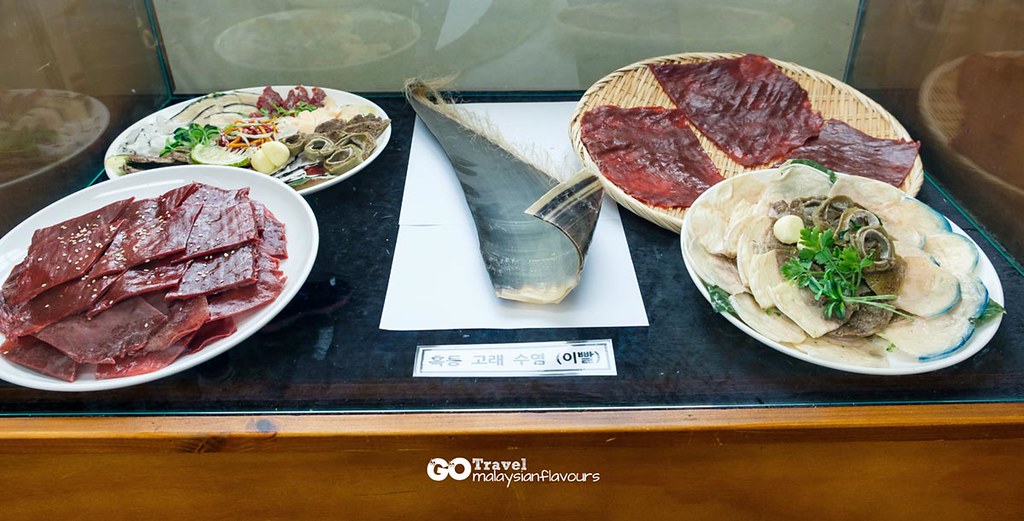
We find that it is a rather interesting attraction, introducing whaling culture in a cuter, more interactive way plus lots of picture-worthy spots.
Jangsaengpo Old Village
A nostalgic area showing Jangsaengpo village life from the 1960-1970’s
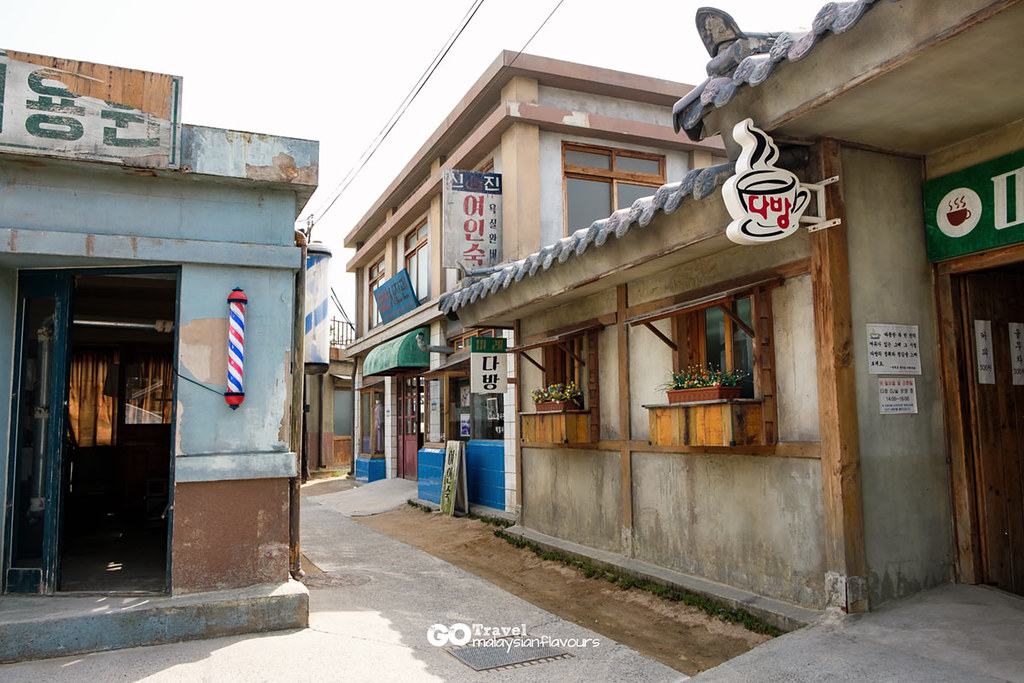

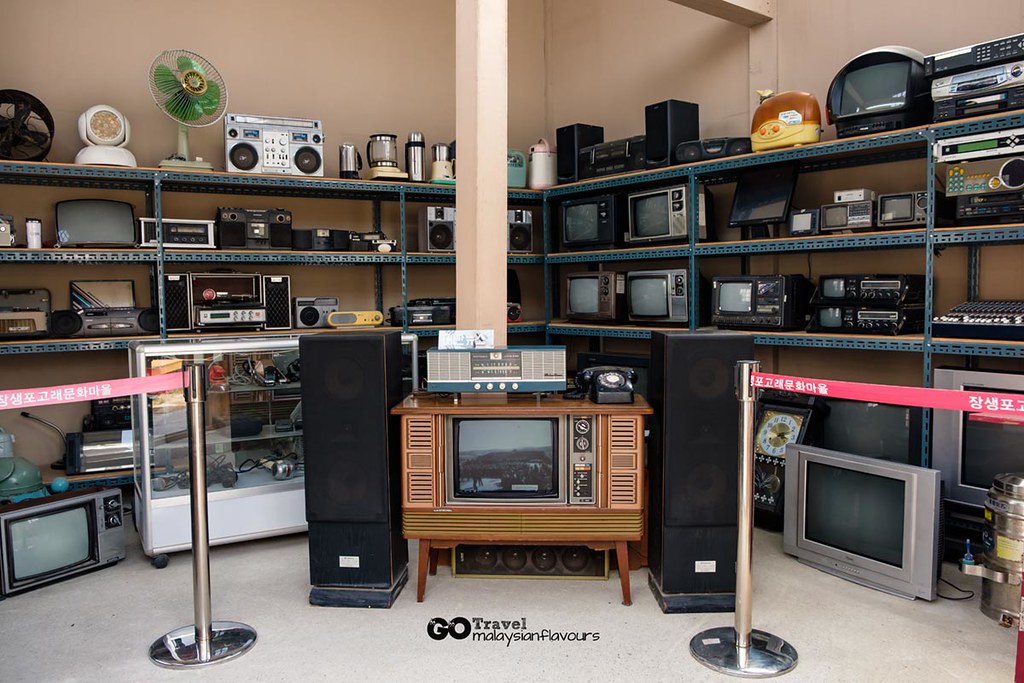
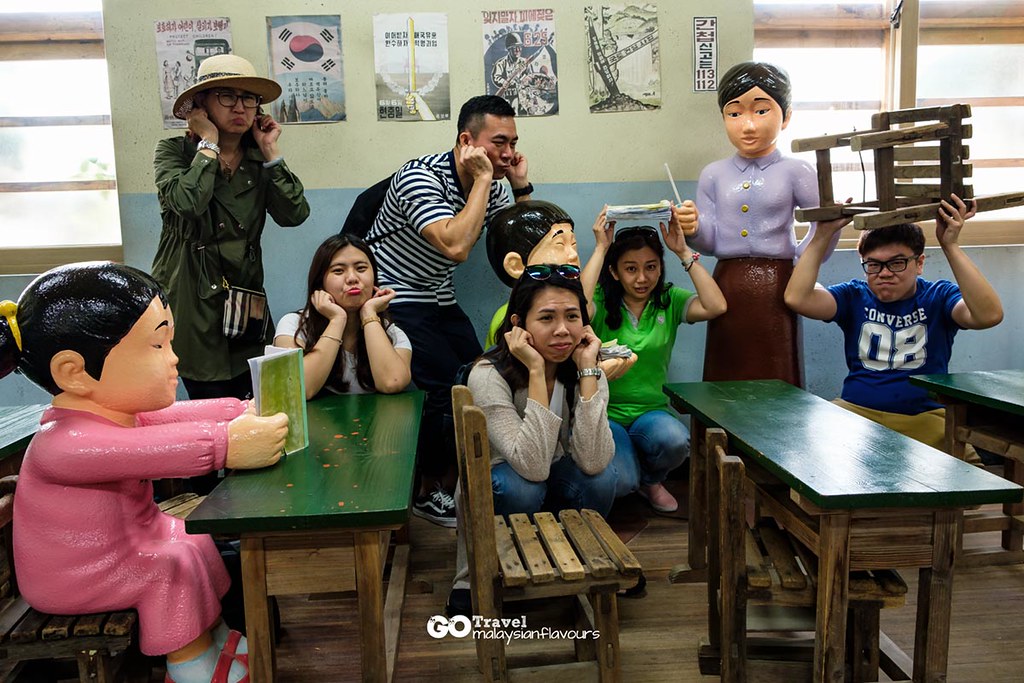
Didn’t finish our homework and get punished by the teacher. =.=lll…#DramaPeople
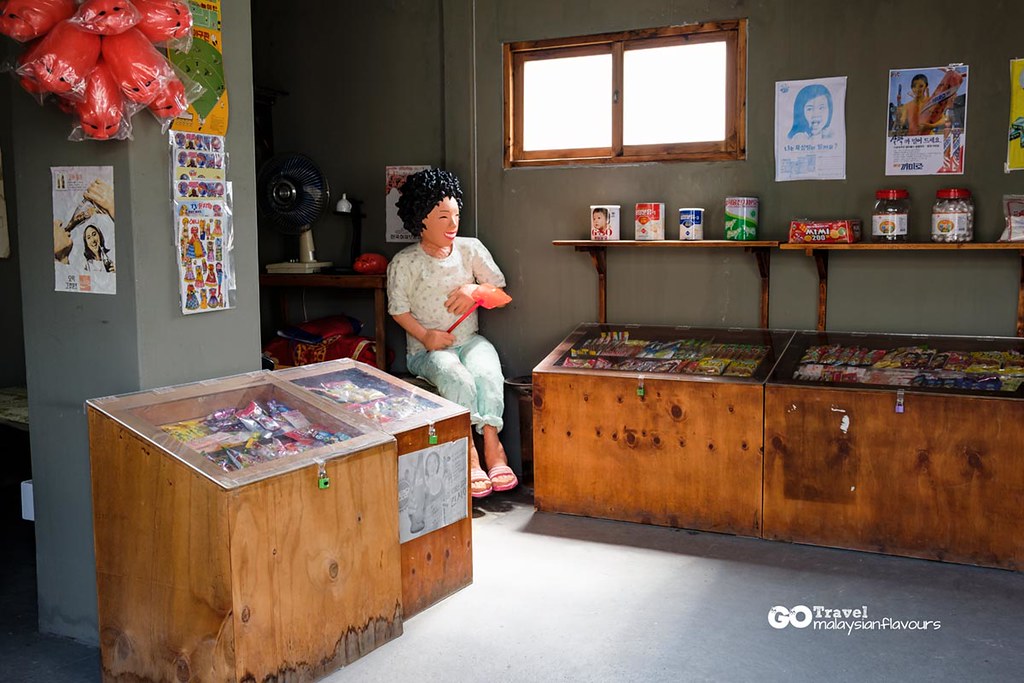
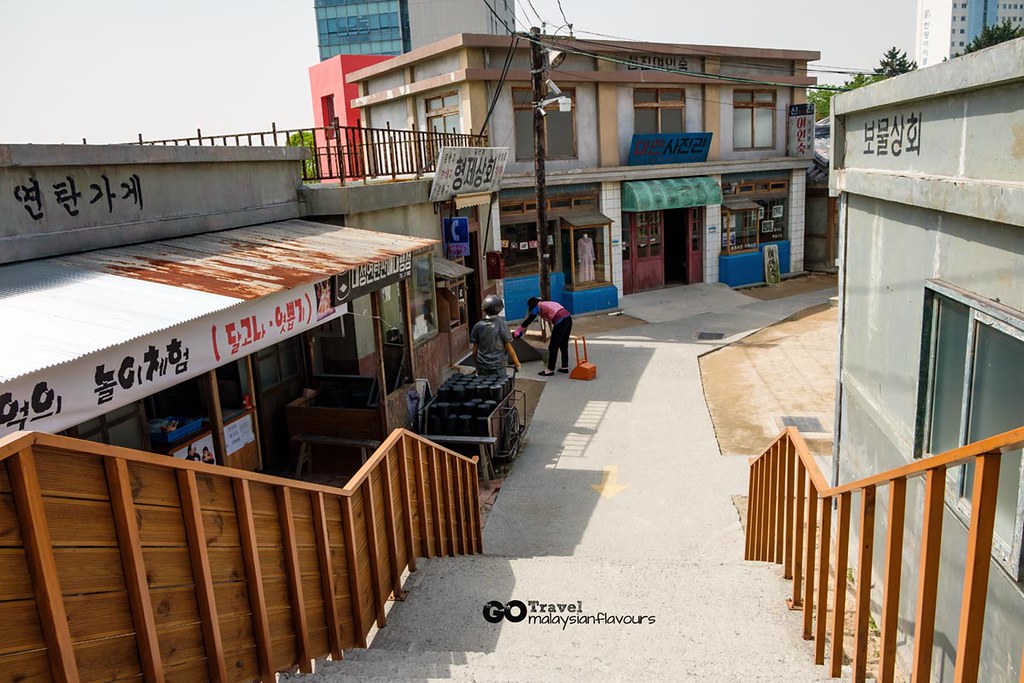
Whale Sculpture Park

Take picture with huge whale sculptures!
Whale Story Trail
Photo zone with themed storyline related to whales
Prehistoric Whale Experience Garden
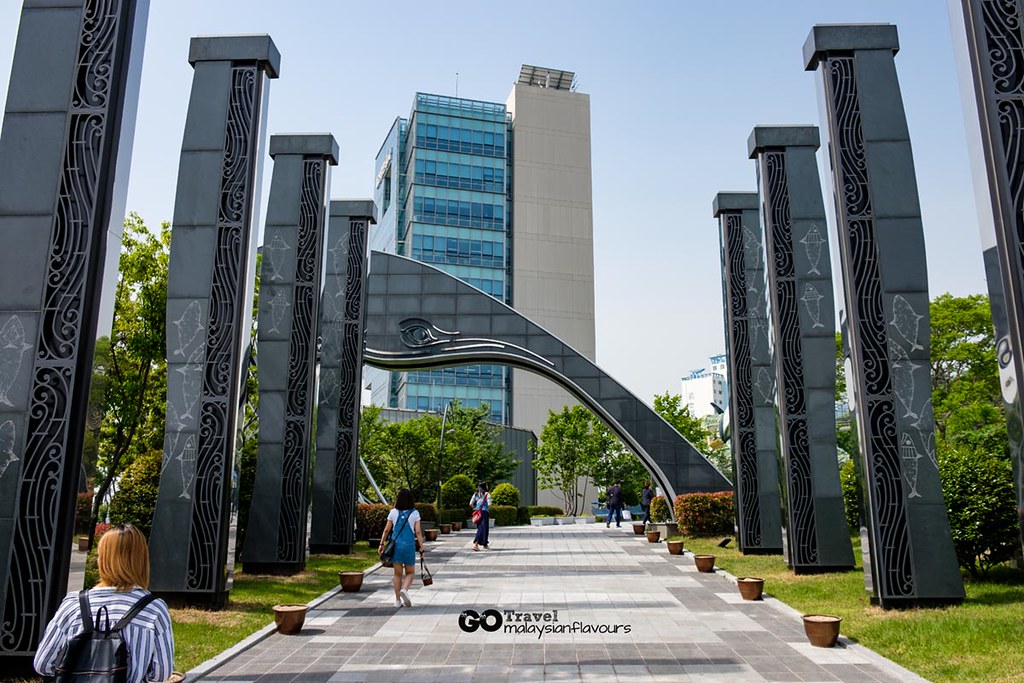
Outdoor educational place for Bangudae Petroglyphs and whale-catching murals.
Address:
Jangsaengpo Whale Culture Village
271-1, Jangsaengpogorae-ro, Nam-gu, Ulsan
Operating Hours:
April-October
Weekdays 9:00AM-6:00PM (Last admission is 30 minute before closing)
Weekends 9:00AM-8:00PM (Last admission is 30 minute before closing)
November-March
9:00AM-6:00PM (Last admission is 30 minute before closing)
Admission / Ticket Price:
Admission fee: 1,000 won
* Free admission: Seniors (65 or more), men of national merit, people with disabilities, babies (ages 3 or younger), etc.
How to reach: Ulsan Cyclic City Tour Loop Course – Daewangam Course, get off at Stop4, Whale Muesum/Whale Life Experience Museum
*******************
21. Petroglyphs of Bangudae Terrace Ulsan
Just one hour drive from Whale Museum, we extended our curiosity about whaling history by visiting Petroglyphs of Bangudae Terrace 울주 대곡리 반구대 암각화, located in Daegok-ri, Ulsan.
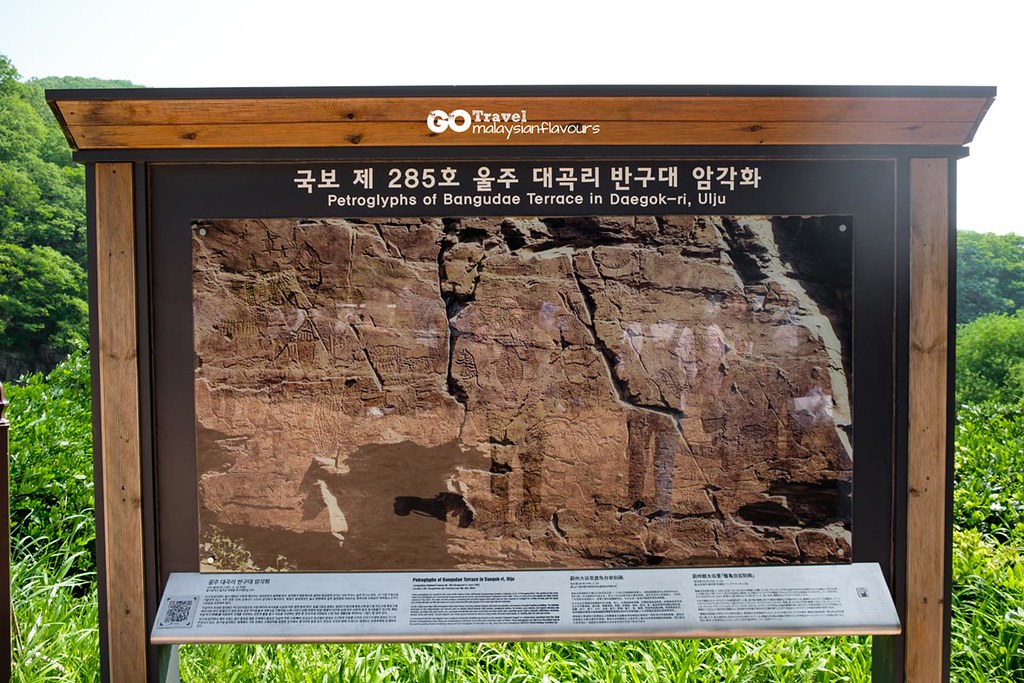
Petroglyphs here are famous for showing the hunting, fishing, whaling and livings of people from the ancient time, dated back to as early as the Neolitik Period, about 3500 – 7000 years ago.
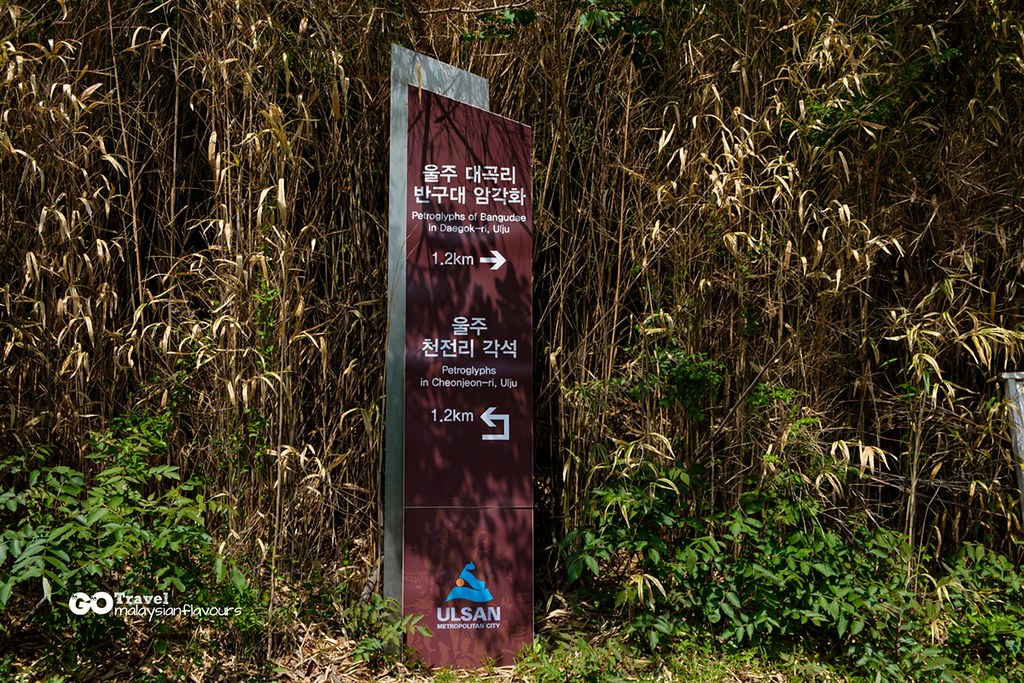
It is designated as Korea’s National Treasure No. 285, and have been included into UNESCO’s World Heritage Tentative List. Petroglyphs of Cheonjeon-ri, which locate

The entrance leading to Petrolyphs of Bangudae is very long. Took us more than 30 minutes to reach. But this is also a popular trekking course thanks to its beautiful, greenery view along the way.

It is also well-known as filming location of Korean TV show “May Queen”
22. Dinasour Tracksite in Daekgok-ri – Dinasours Foot Prints
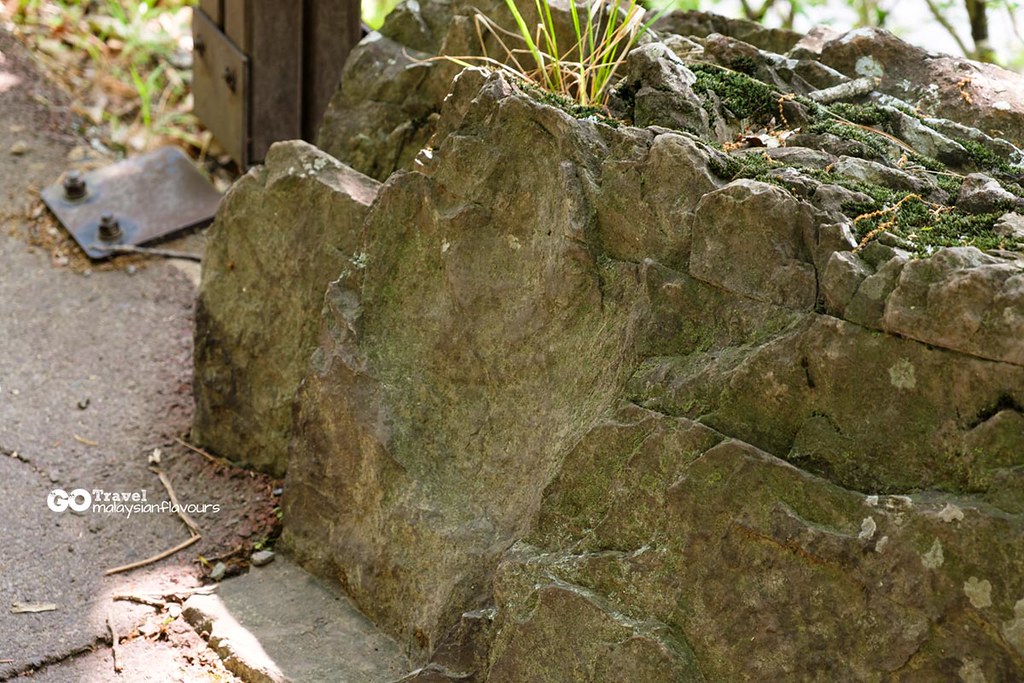
There are fossilized footprints here too, persumed left by dinasours that lived about 100million years ago during the Creataceous Period of the Mesozoic Era.
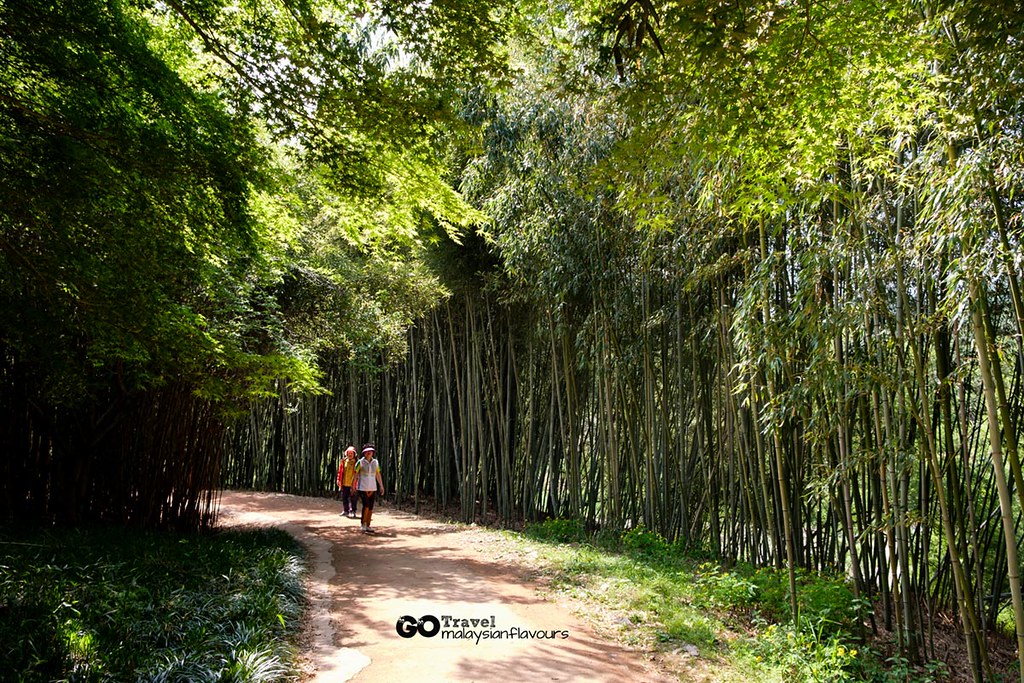
Walk..walk…keep walking and finally…
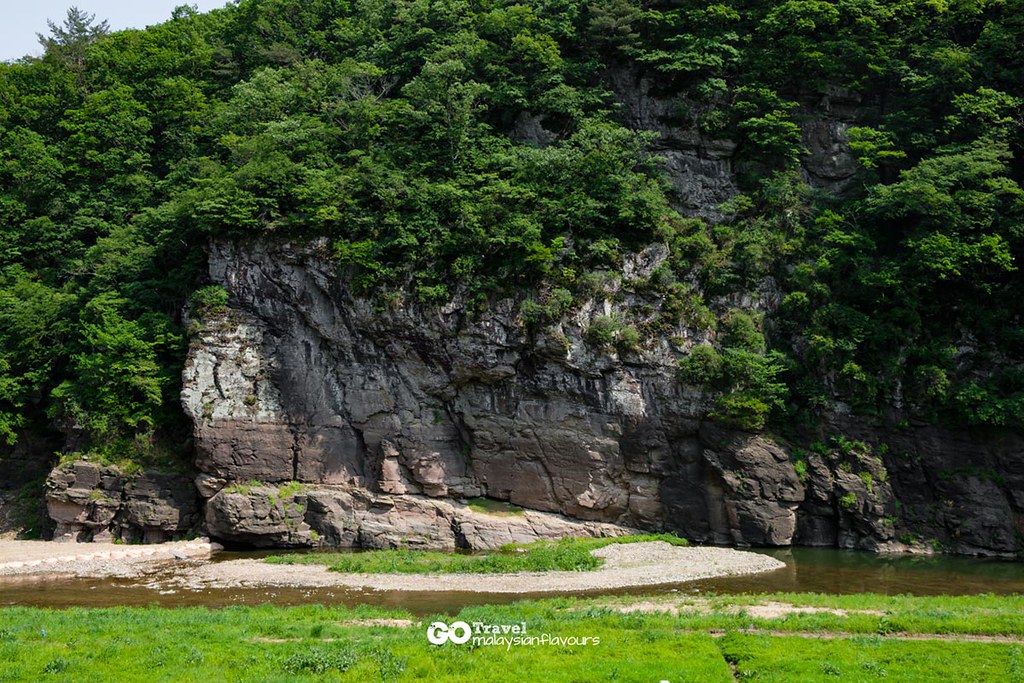
Hello, Petroglyphs of Bangudae!
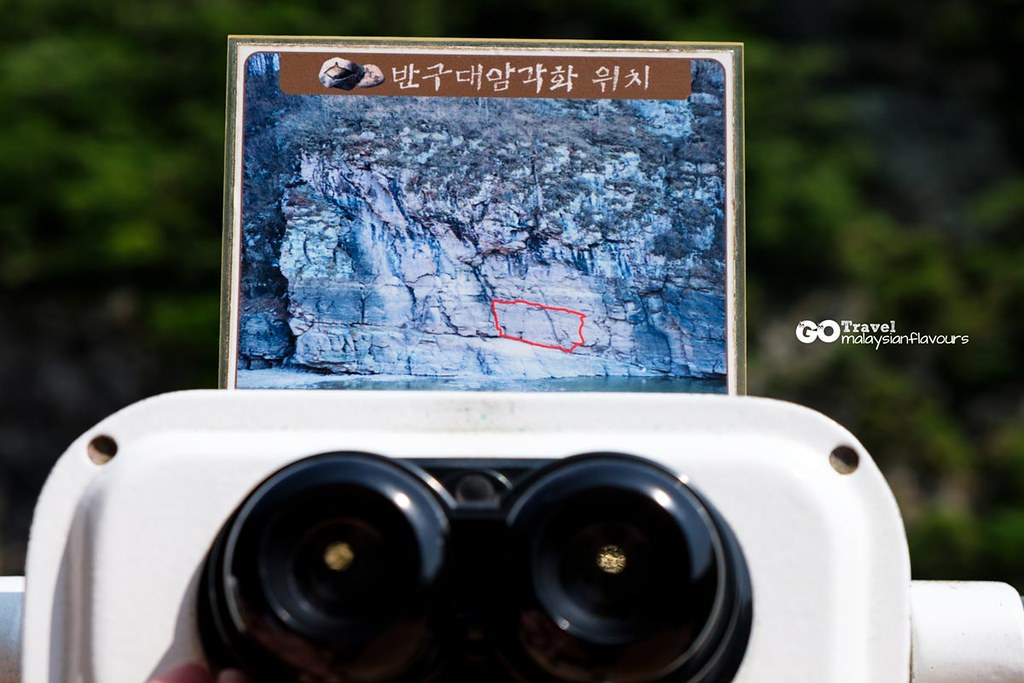
It is too far to see these petroglyphs by using bare eyes. Try examining through telescope provided.
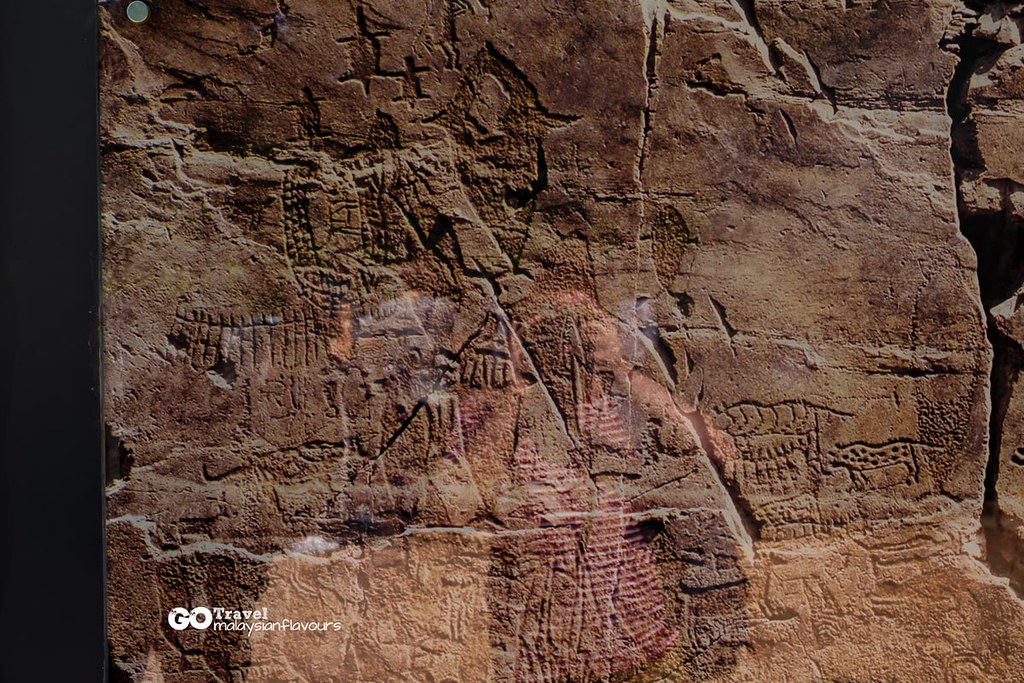
There are about 300 figures found carved on the rocks, covering about 8metres wide, 5 metres in height.
Deer, tigers, wild boars, seals, sea turtles and various types of whales can been seen here, along with hunting and fishing scenes, tools like harpoons, arrows, and boats. Engravings of whales here are also a strong evidence that whaling activities has started since the ancient time.
Address:
Bangudae Petroglyphs 울주 대곡리 반구대 암각화
San 234-1, Daegok-ri, Eonyang-eup, Ulju-gun, Ulsan, Korea
Admission: Free
*******************
23. Ulsan Petroglyph Museum
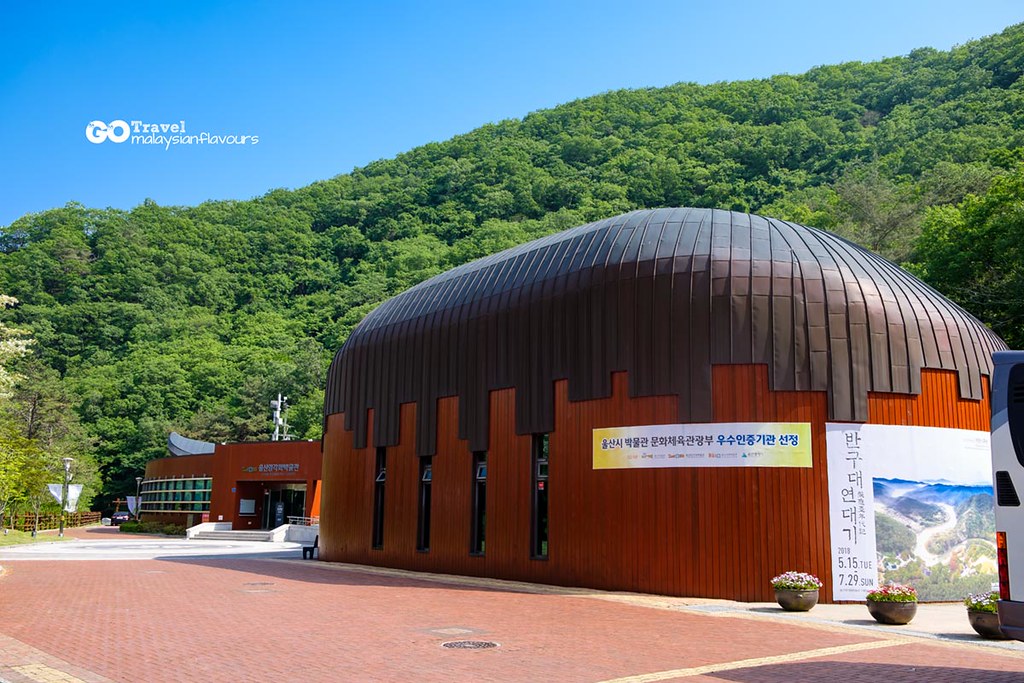
Our Bangudae Petroglyphs ended with Ulsan Petroglyph Museum, Korea’s first and only petroglyph museum. Inside the musuem displays life-size models of the Petroglyphs of Bangudae Terrace in Daegok-ri and the Petroglyphs of Cheonjeon-ri and provides pre-historic culture experience programs.
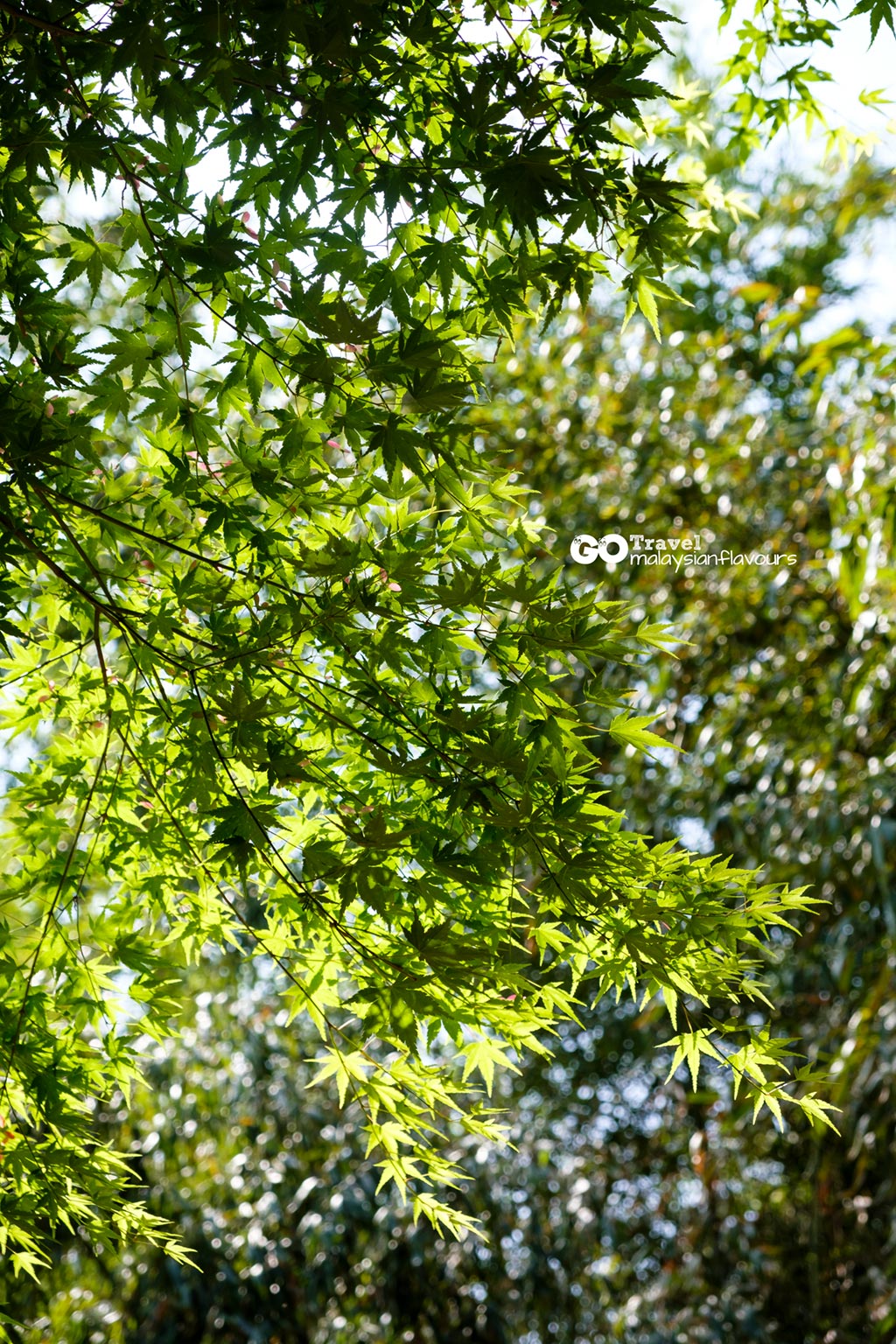
Saw maple leaves in early Summer while on the way back! Still pretty!
Address:
Ulsan Petroglyph Museum 울산암각화박물관
254, Bangudaean-gil, Ulju-gun, Ulsan, Korea
Operating Hours
9:00AM-6:00PM
* Last admission is 30 minutes before closing.
Closed every Monday (If Monday is a national holiday, the following day will be closed.), New Year’s Day
Admission: Free
*******************
24. Daewangam Park – A Park with 100-Year-Old Pine Forest
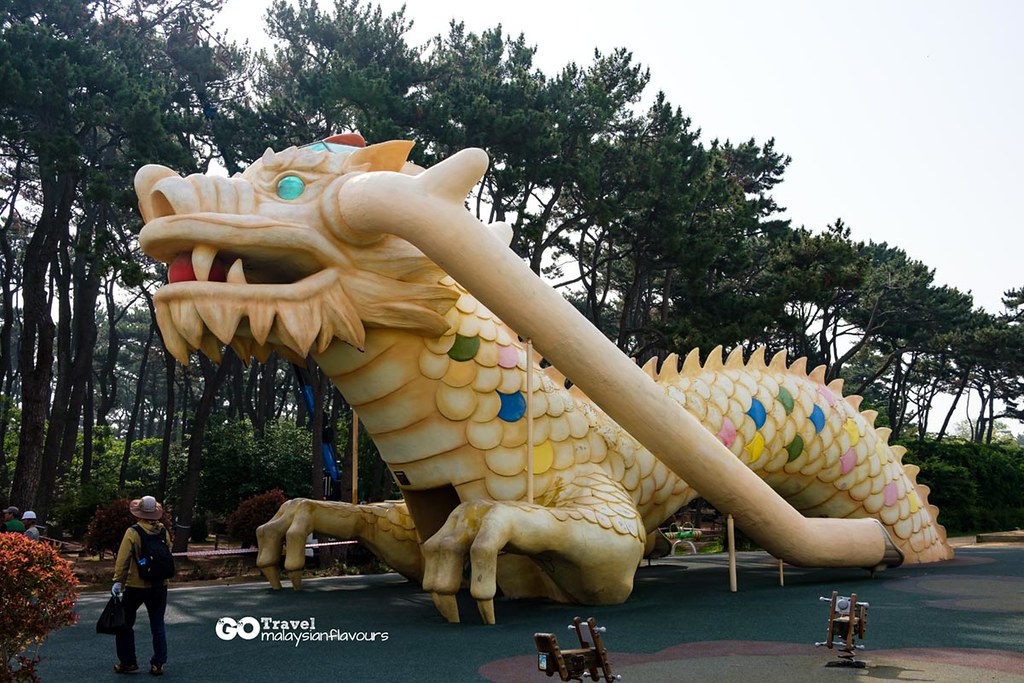
Daewangam Park, one of the 12 Scenic Sites of Ulsan, is a seaside park located on the East coast of Korea – in Ilsan, Dong-gu, Ulsan.

The park, which covers an area of 10,000,000 sqr ft., is beautifully enhanced by 15,000 100-year-old black pine trees landscape, stretching out for about 600m long along a well-established trail.
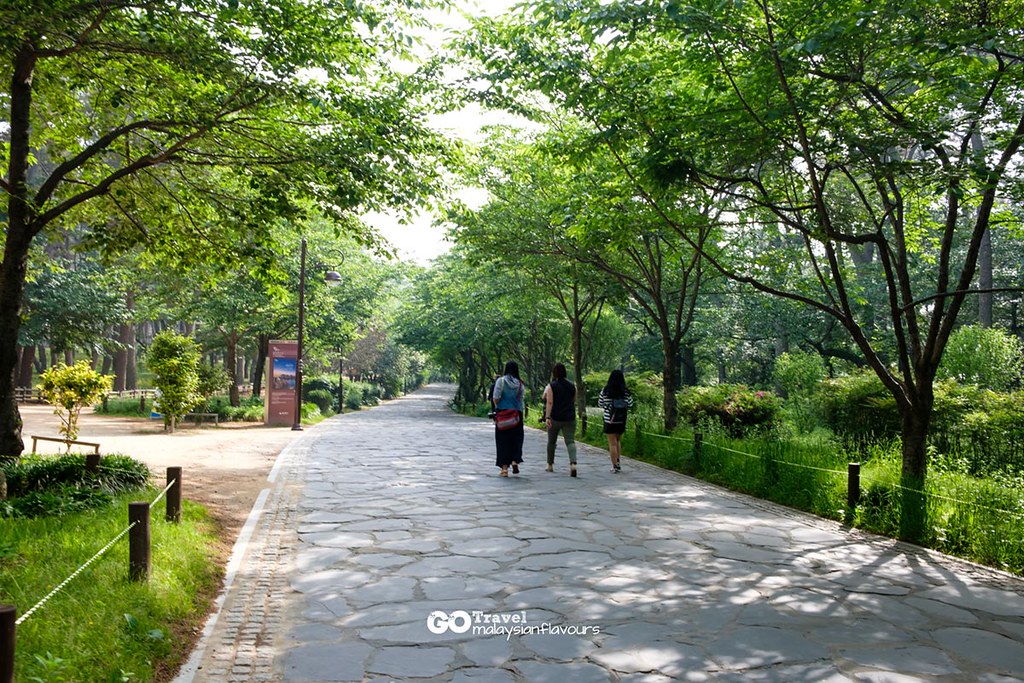
From entrance, we walked along this forest trail and by the end of the route, we were welcomed by stunning view of the wide and blue East Sea. Continued walking, we saw many oddly shape rocks, formed by years of erosion and ocean waves.
25. Daewangam Island

Another highlight of Daewangam Park is Daewangam Island, a large rock island connected to the park through a suspended iron bridge name Daewangam Bridge. Many said that Daewangan Isaland looks looks like a dragon rising up into the sky.
26. Ulgi Lighthouse

Daewangam Park is also the home to Ulgi Lighthouse 울기등대- the first octagonal lighthouse built in Ulsan. As time goes by, the growing of pine trees covered the light, making it has to be shifted to a new location, which is 50m from the original one.
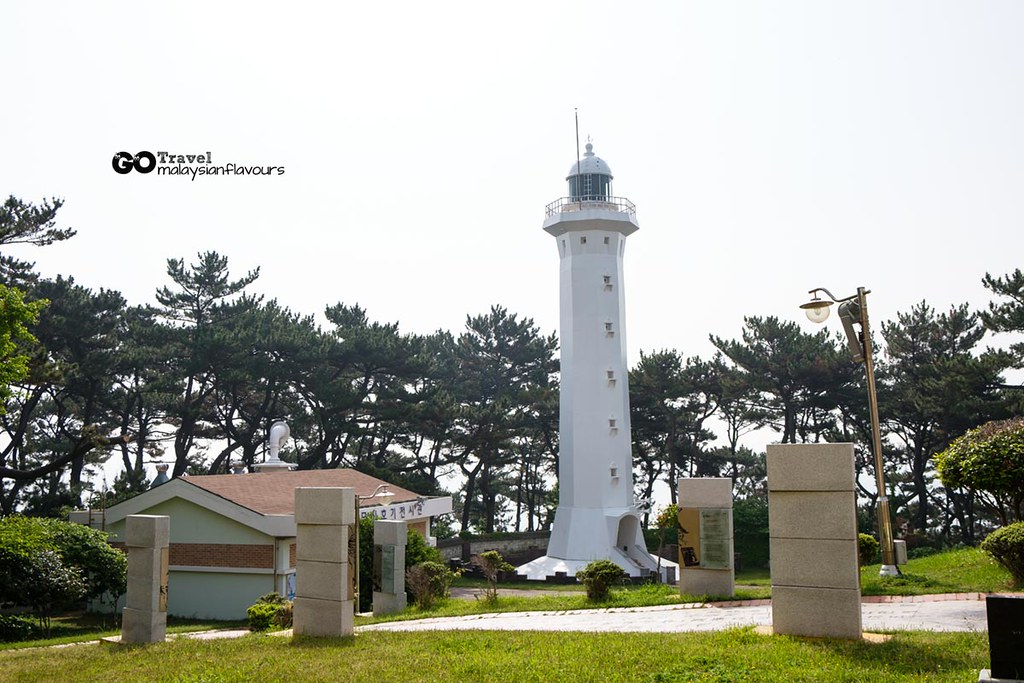
It is then rebuilt from 6m height, to 24m in height for a slimmer, candle-shape lighthouse.

The original lighthouse, however, is preserved and now becomes Korea Registered Culture Treasure No. 106 and Lighthouse Cultural Treasure No.9.
*******************
27. Oegosan Onggi Village
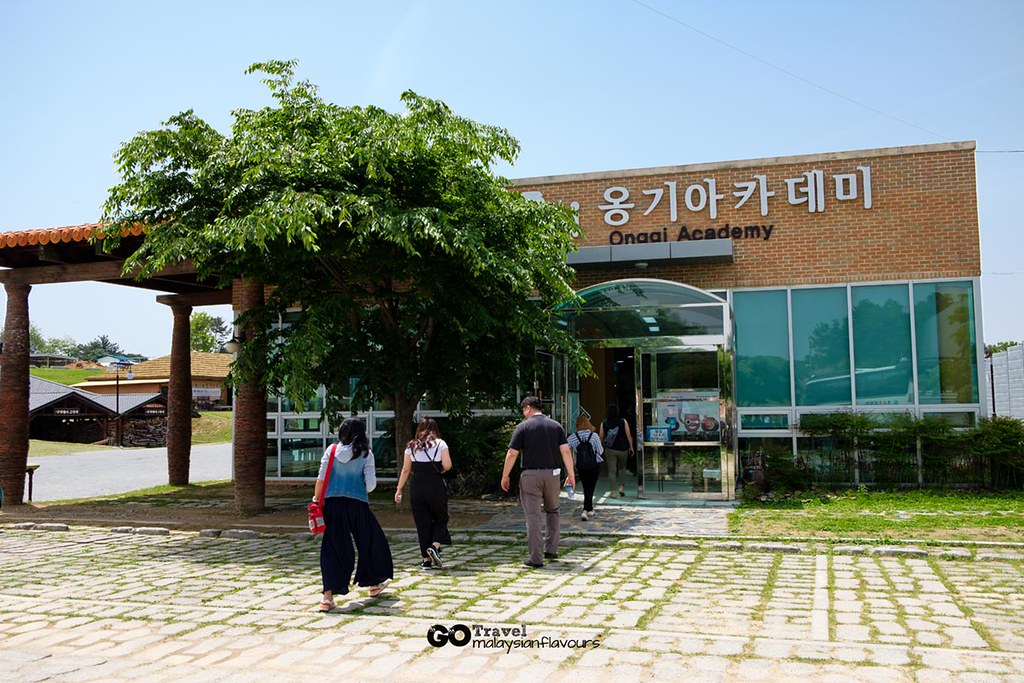
Oegosan Onggi Village 외고산옹기마을, one of the largest traditional onggi producer in Korea. This is also where Oegosan Onggi Festival held every October too.
Artisans and potters from different places in Korea gather here, producing Koreans earthenware while preserving the tradition of onggi art and craft. Other than getting traditional earthenware, visitors can walk through Ulsan Onggi Museum that provides various information about the history, culture, development of onggi in Korea.
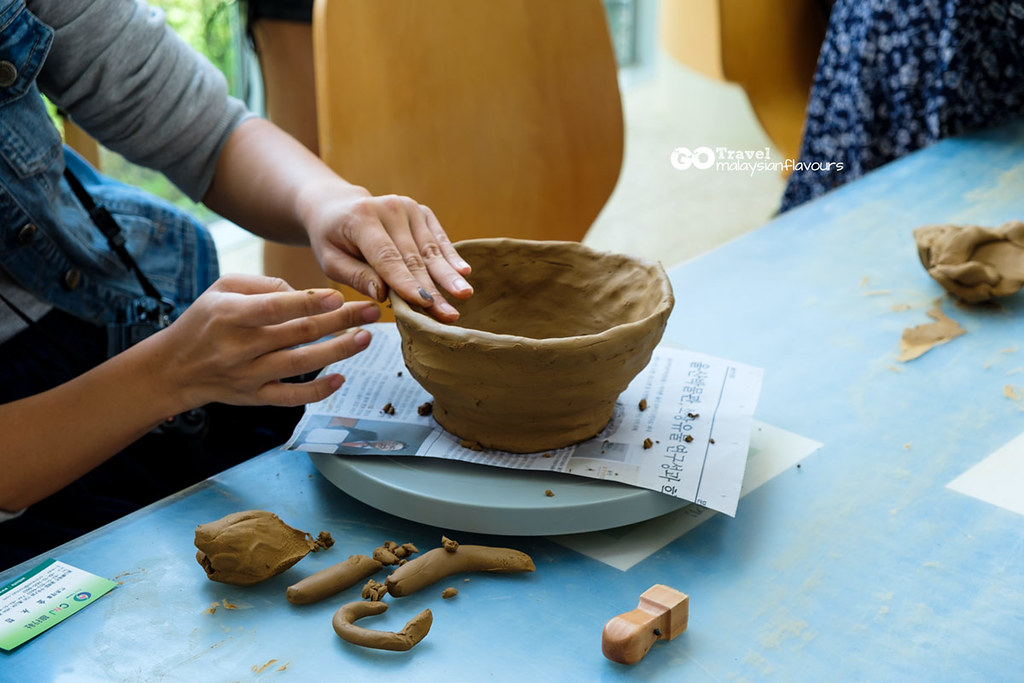
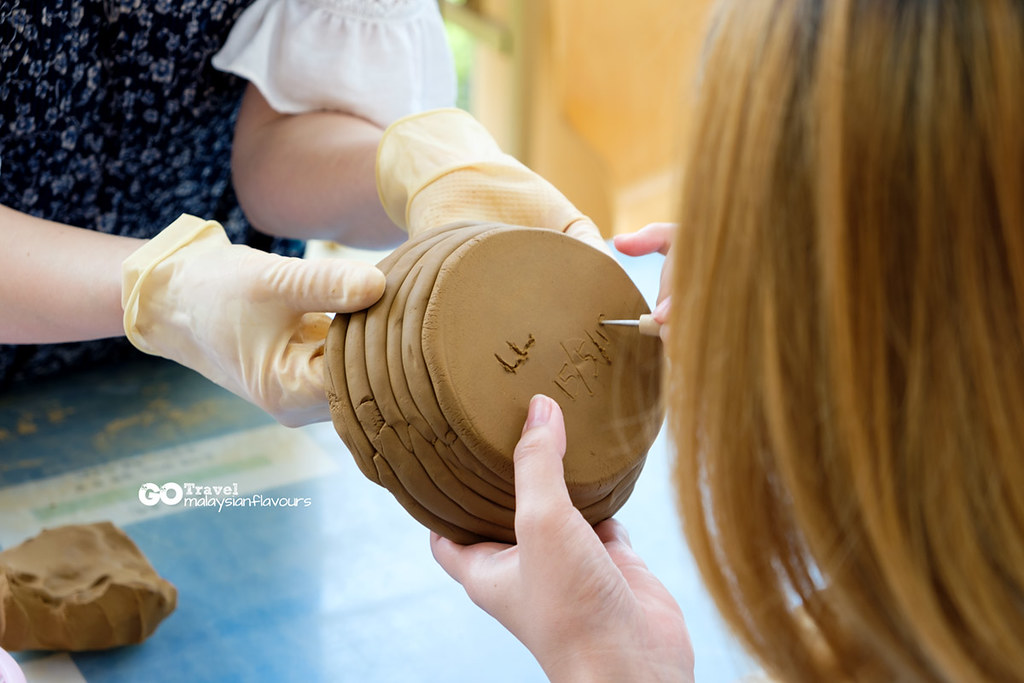
We even explore further by making our own earthenware at The Onggi Academy. Very fun DIY class, crafting a pottery from scratch. Write down our name at the bottom of the onggi when we were done with the shape we want.
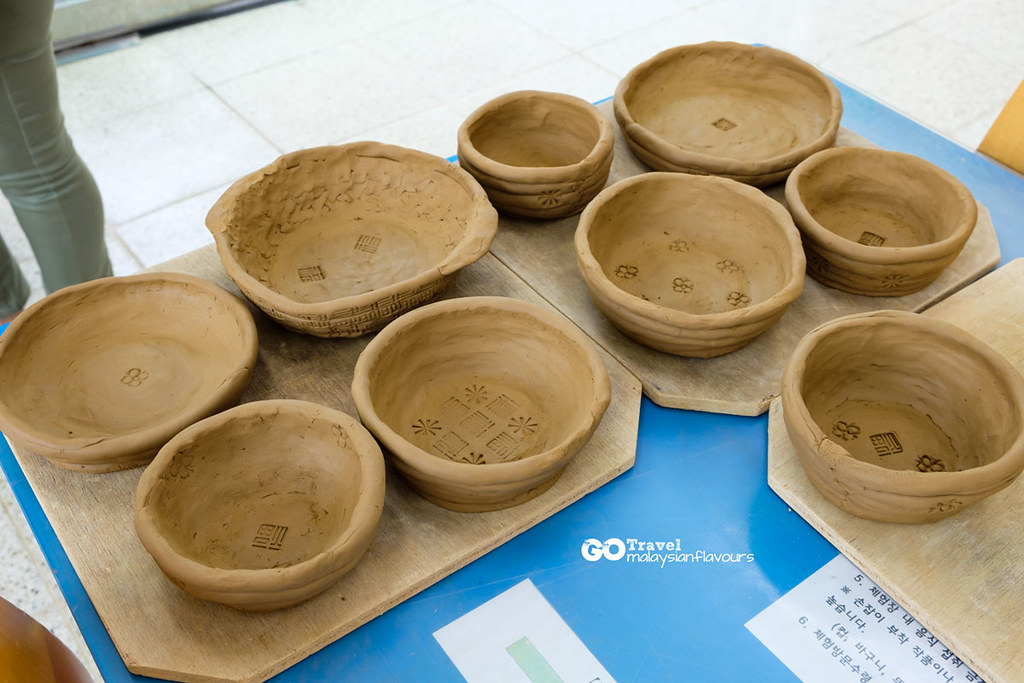
Yay! The outcome! But have to wait for a month before we can bring it home. Great for locals, maybe a little hard for tourists as they do not offer overseas delivery service for the DIY pottery.
Address:
Oegosan Onggi Village 외고산옹기마을
36, Oegosan 3-gil, Ulju-gun, Ulsan, Korea
Operating Hours
[Onggi Museum] 09:00-18:00
[Onggi Academy] 09:00-18:00
Admission Fees
Museum: 30,000 won
* 20% discount on weekends & public holidays
Main attractions:
Onggi Museum, Onggi Academy Hall, Onggi Culture Park, eco-pond, village information center, etc.
*******************
28. Boksoondoga Rice Wine Brewery – Makgeolli Experience
Last stop, Makgeolli experience at Boksoondoga, an award-winning Korean rice wine brand from Ulju-gun Ulsan.
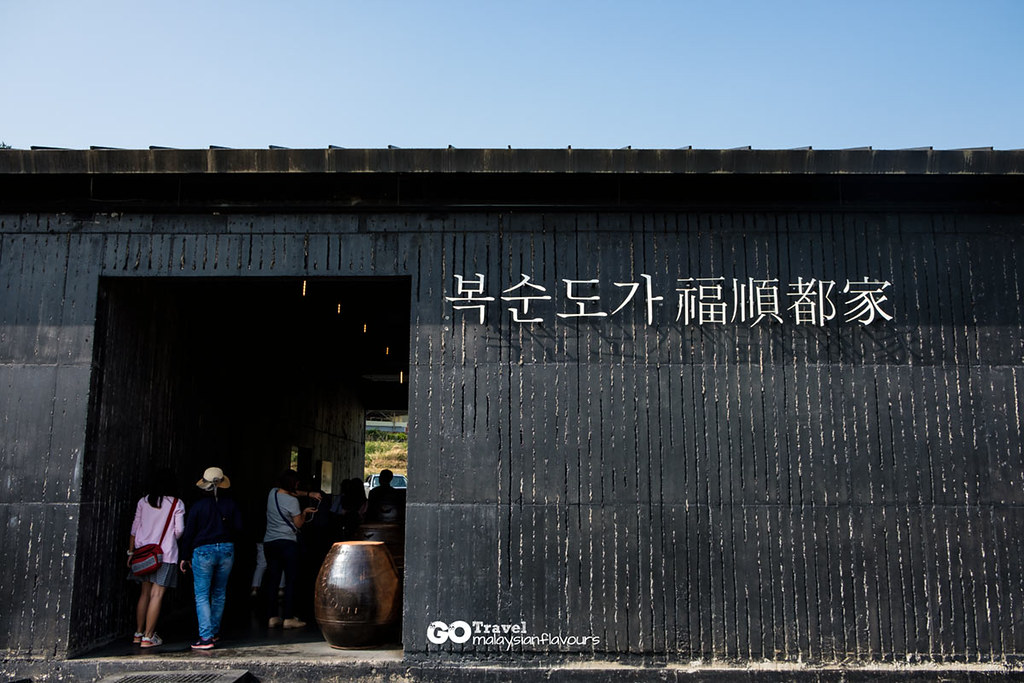
The brand is once the proud winner of Gold Medal Award at San Francisco International Wine Competition, Silver Medal Award Award at the International Wine & Spirit Competition, and the Bronze Medal Award at Los Angeles International Wine Competition.
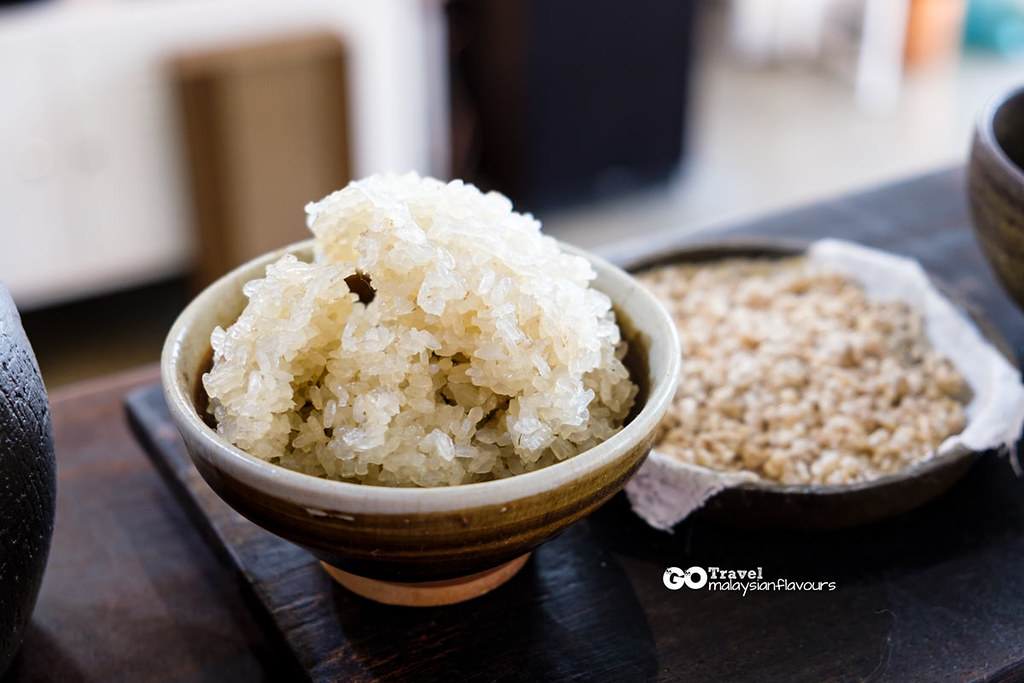
It is famous for their pure, non-pasteurized rice wine brewed by using 100% newly harvested Korean rice from Eonyang’s rich soil, then fermented in Korean pottery.
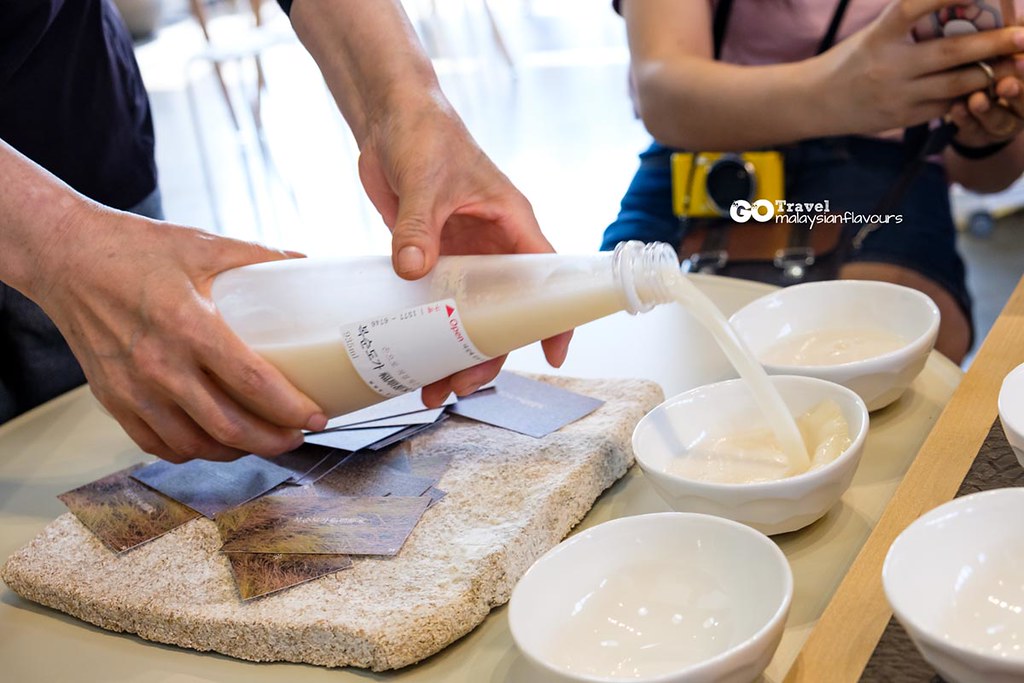
One thing that differ Boksoondoga Rice Wine from normal Makgeolli is that, their rice wine mixes evenly without having to shake the bottle before opening.
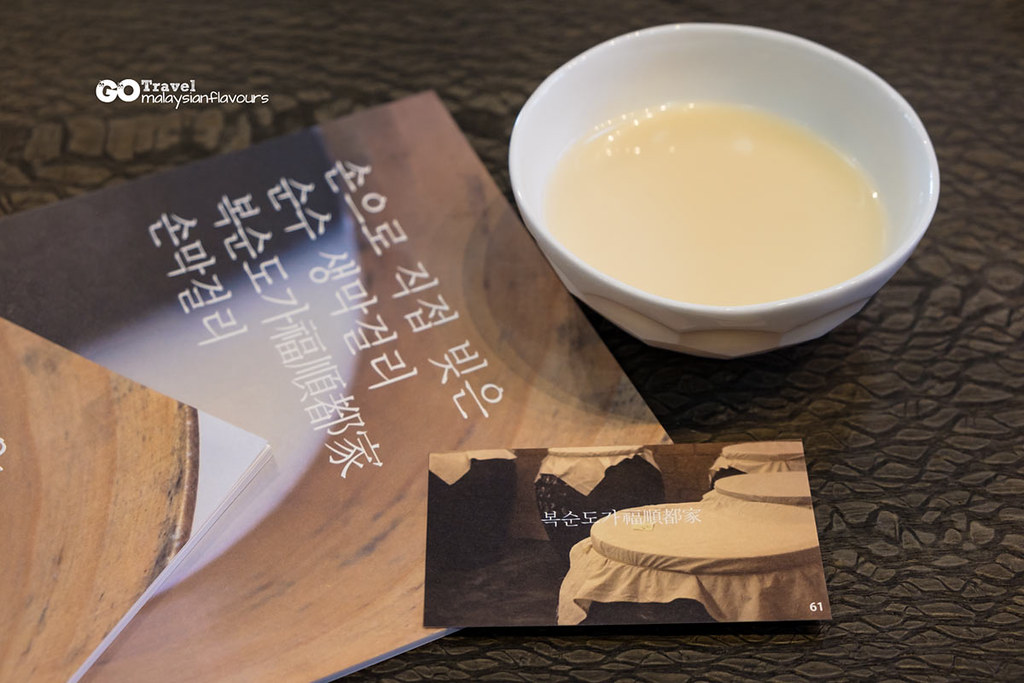
Taste so smooth, and full of natural carbonation like champagne.
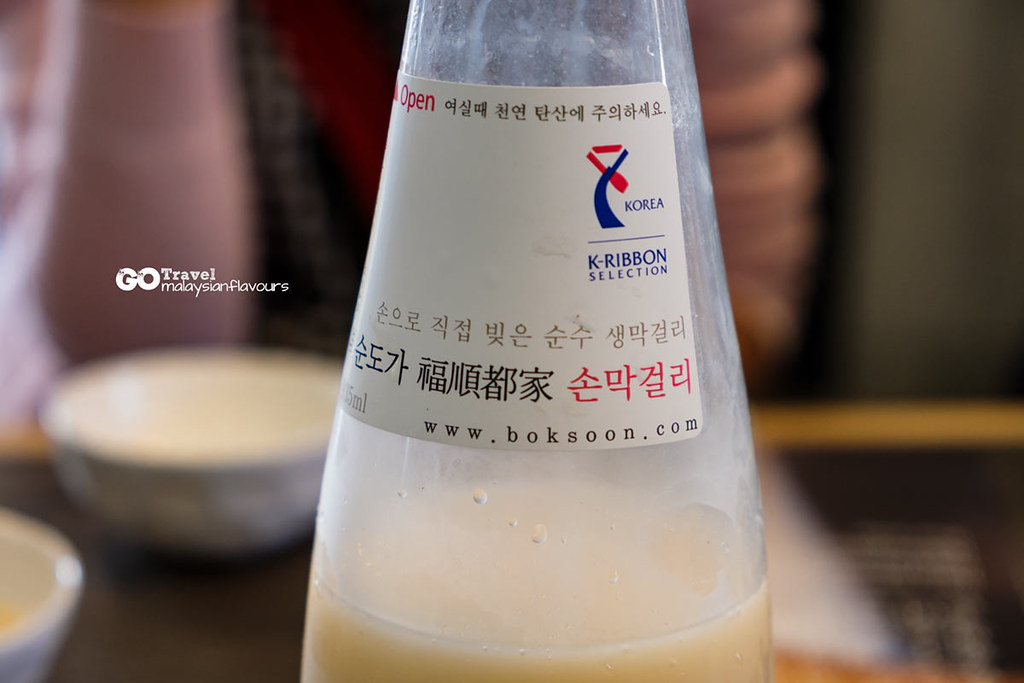
Do drop by at Boksoondoga Brewery for some learning, tasting and of course, purchase of Korean rice wine when you are in Ulsan!
Address:
Boksoondoga
Hyangsandong-gil 48, Sangbuk-myeon, Ulju-gun, Ulsan, Korea.
Opening hours: 9AM-6PM
Website: http://boksoondoga.com/
